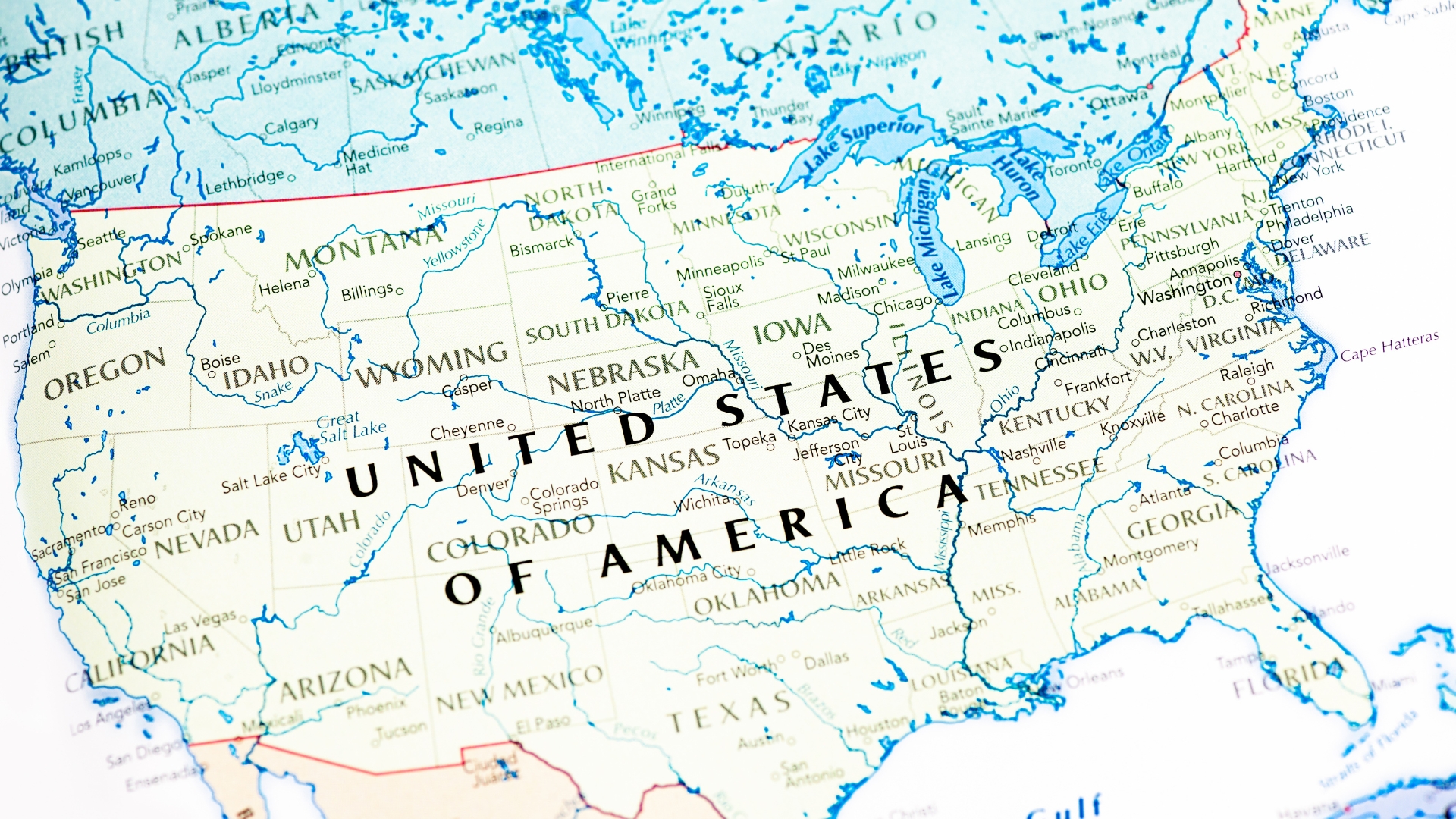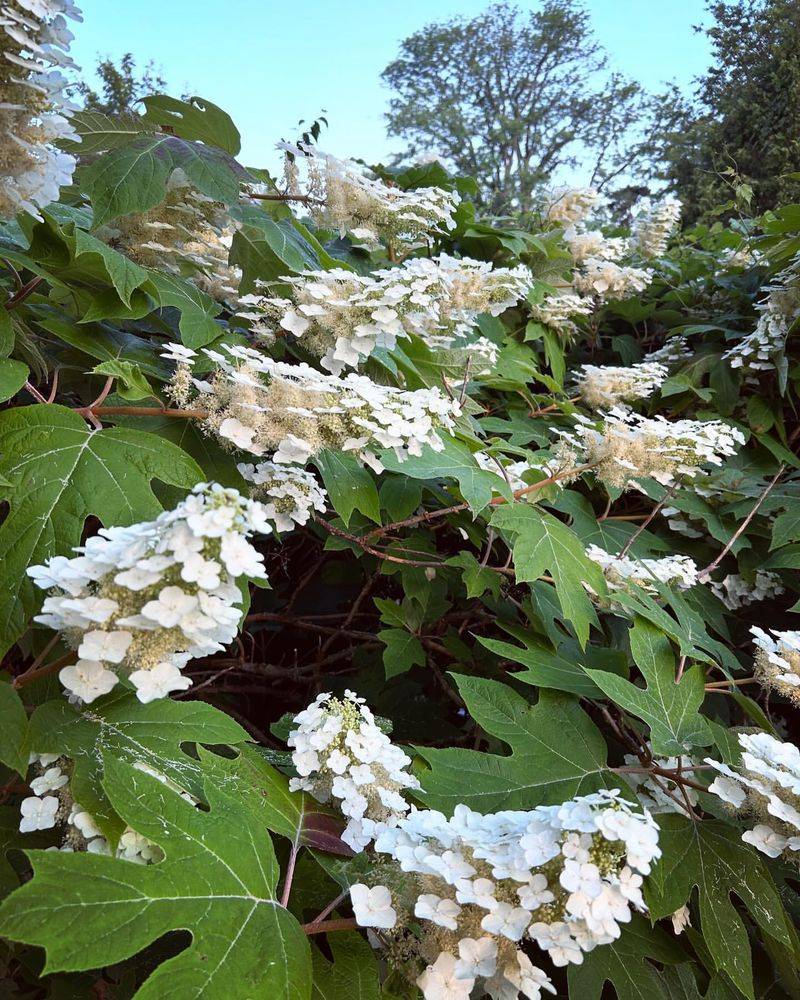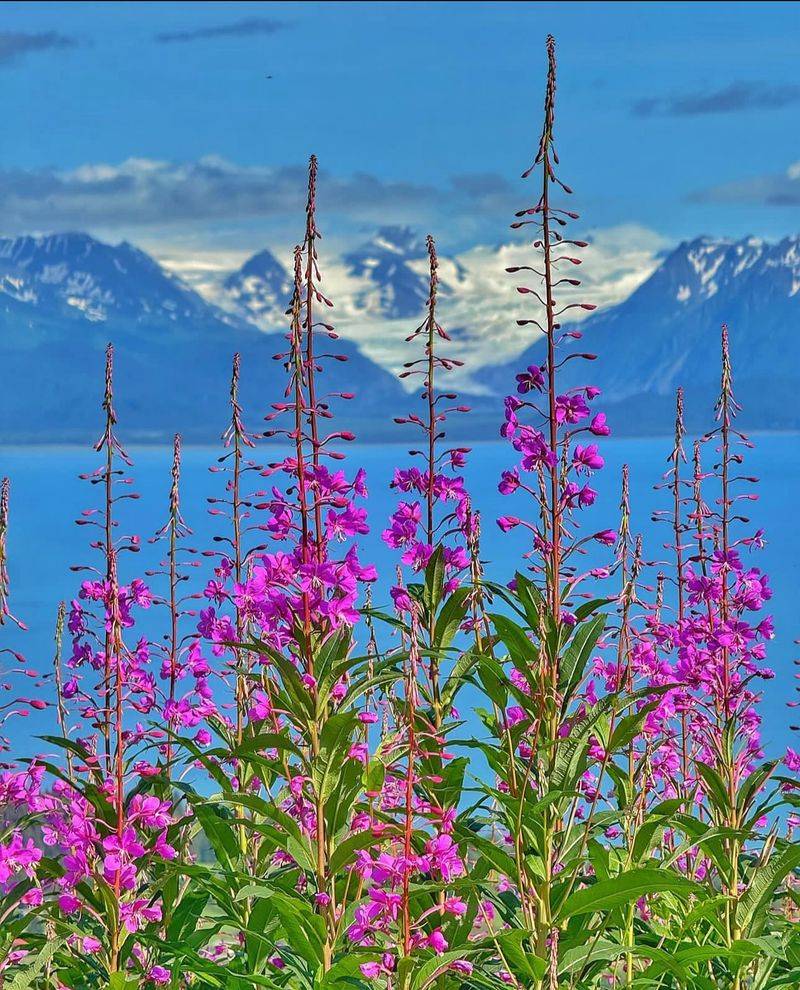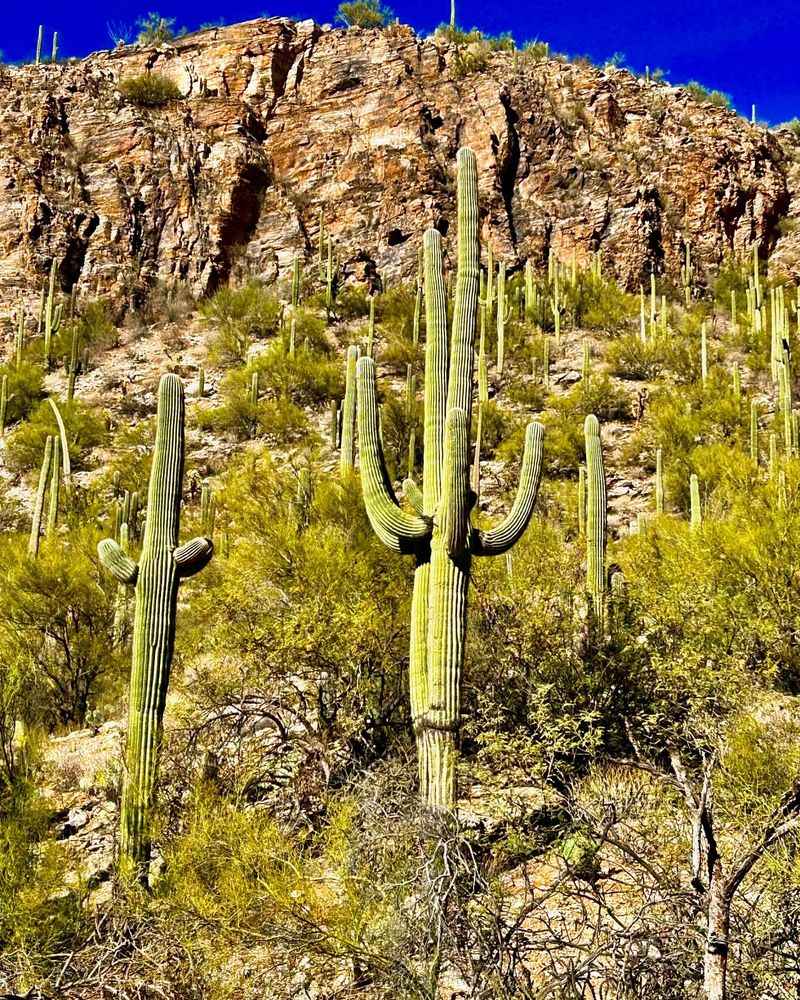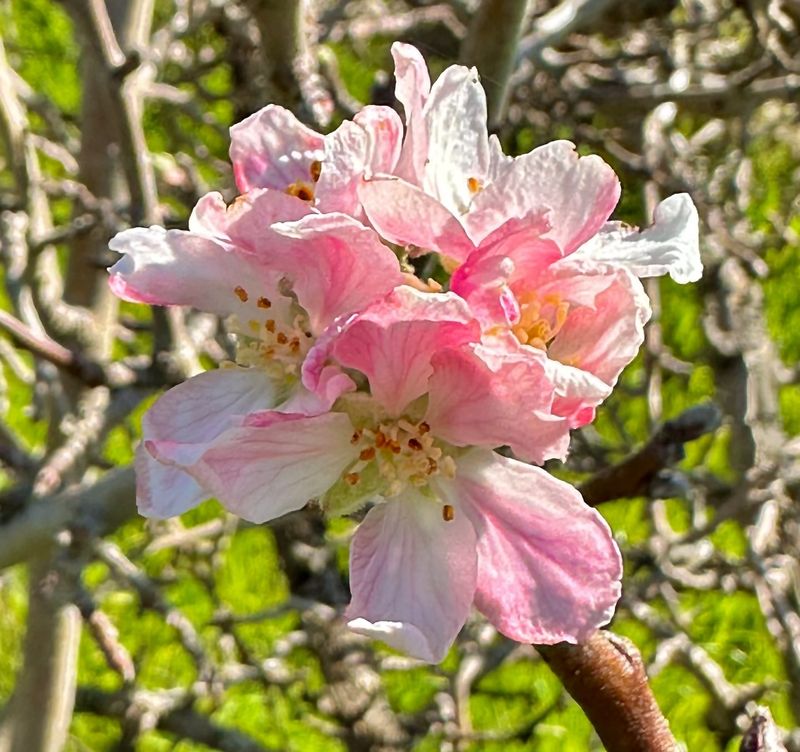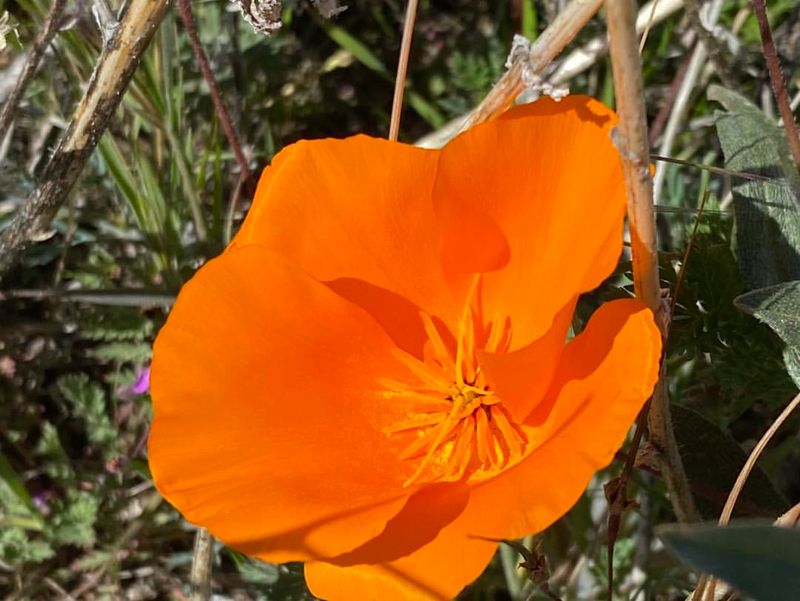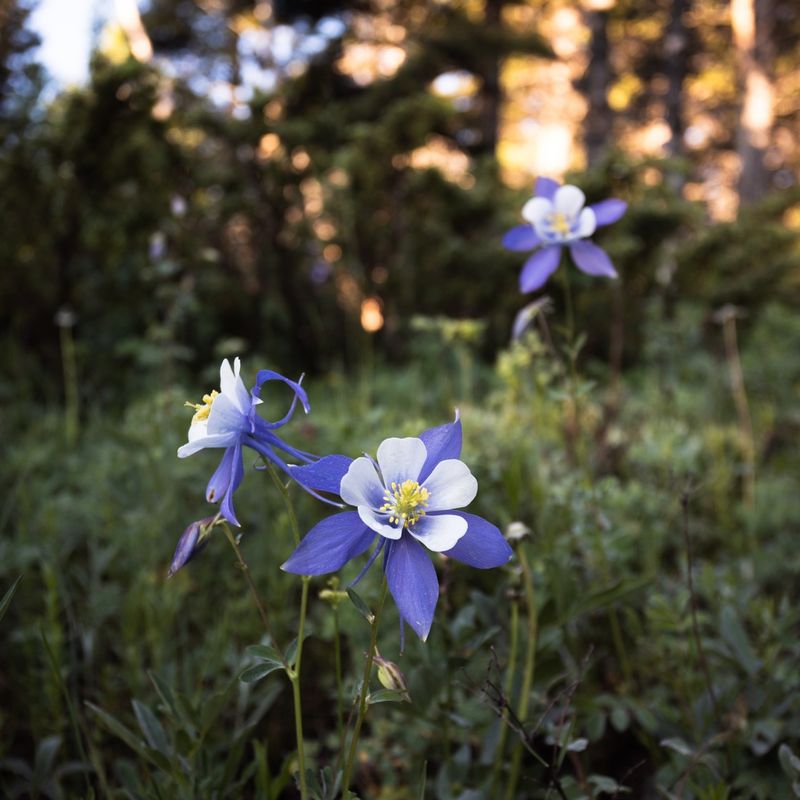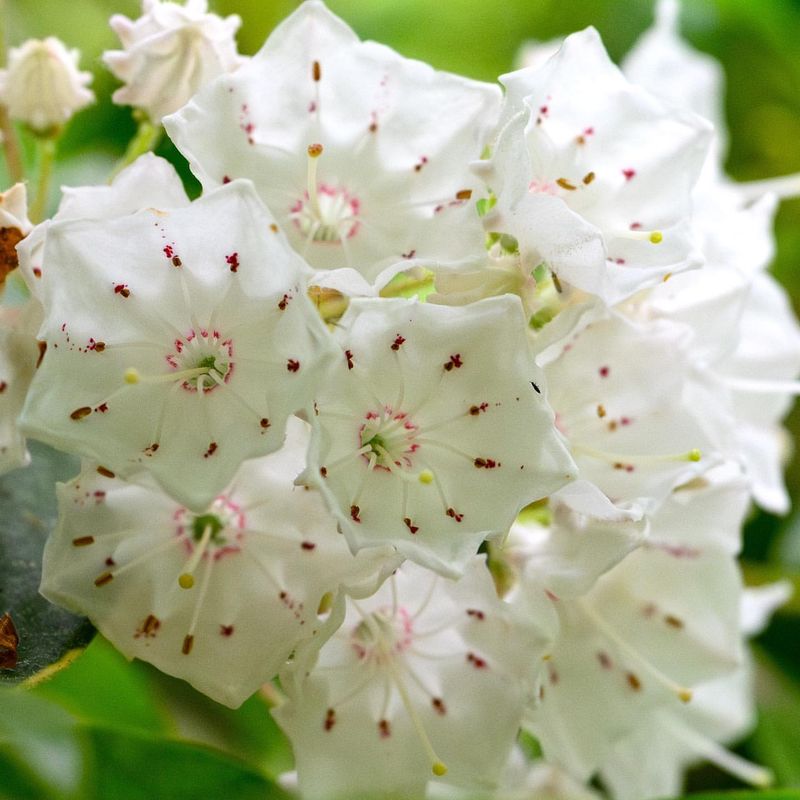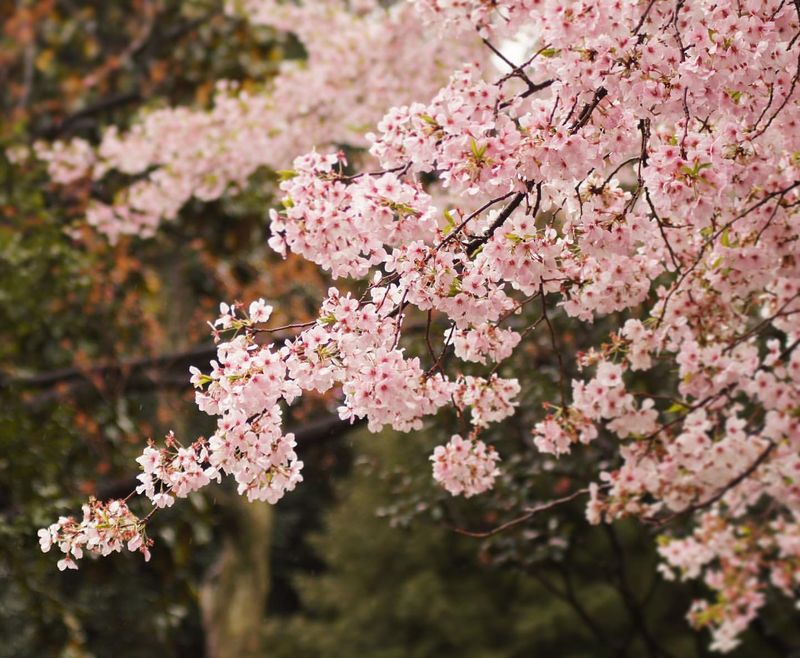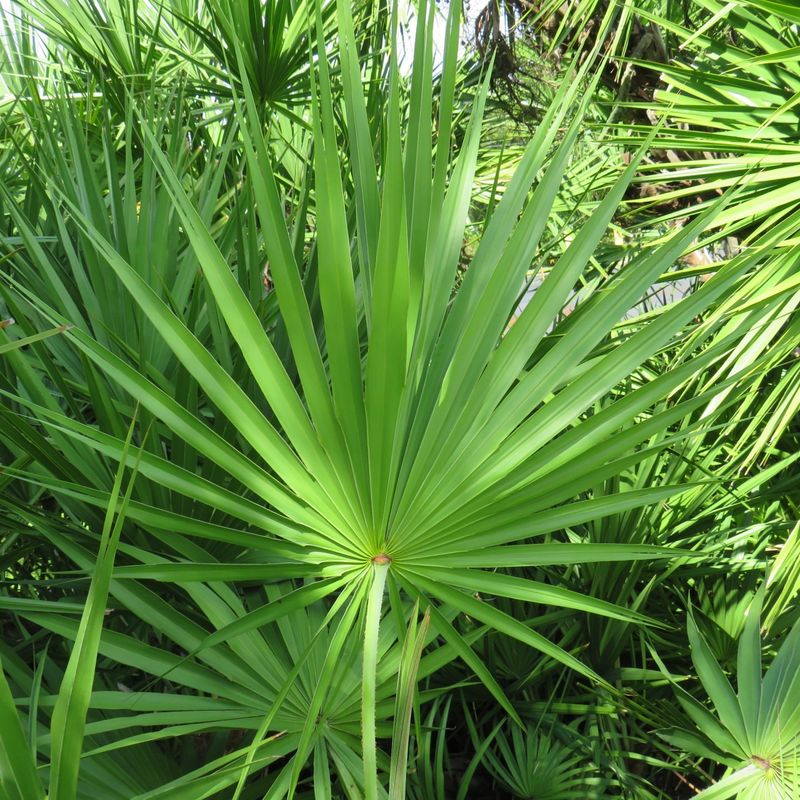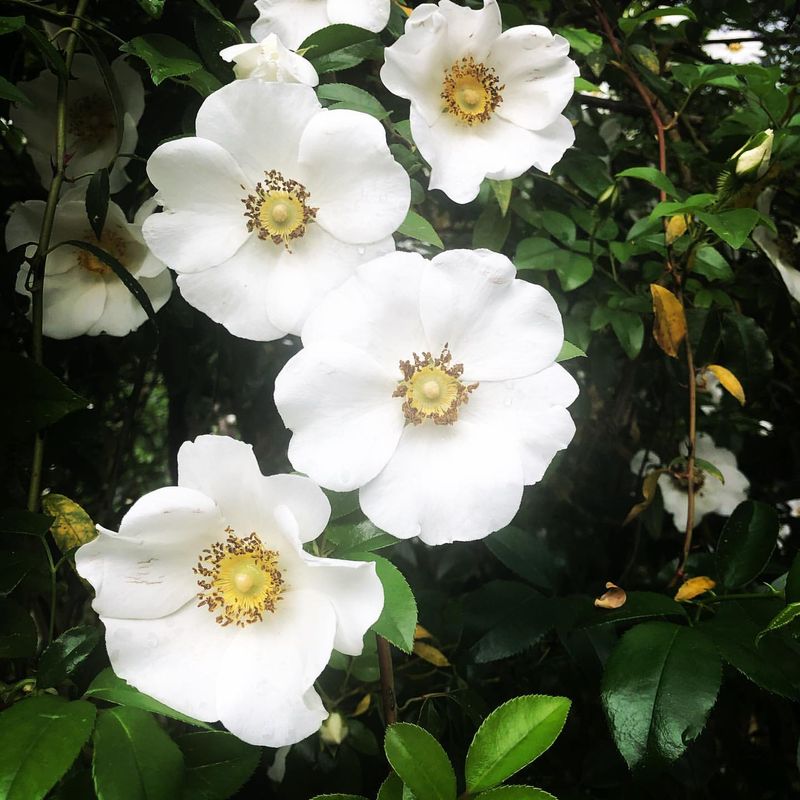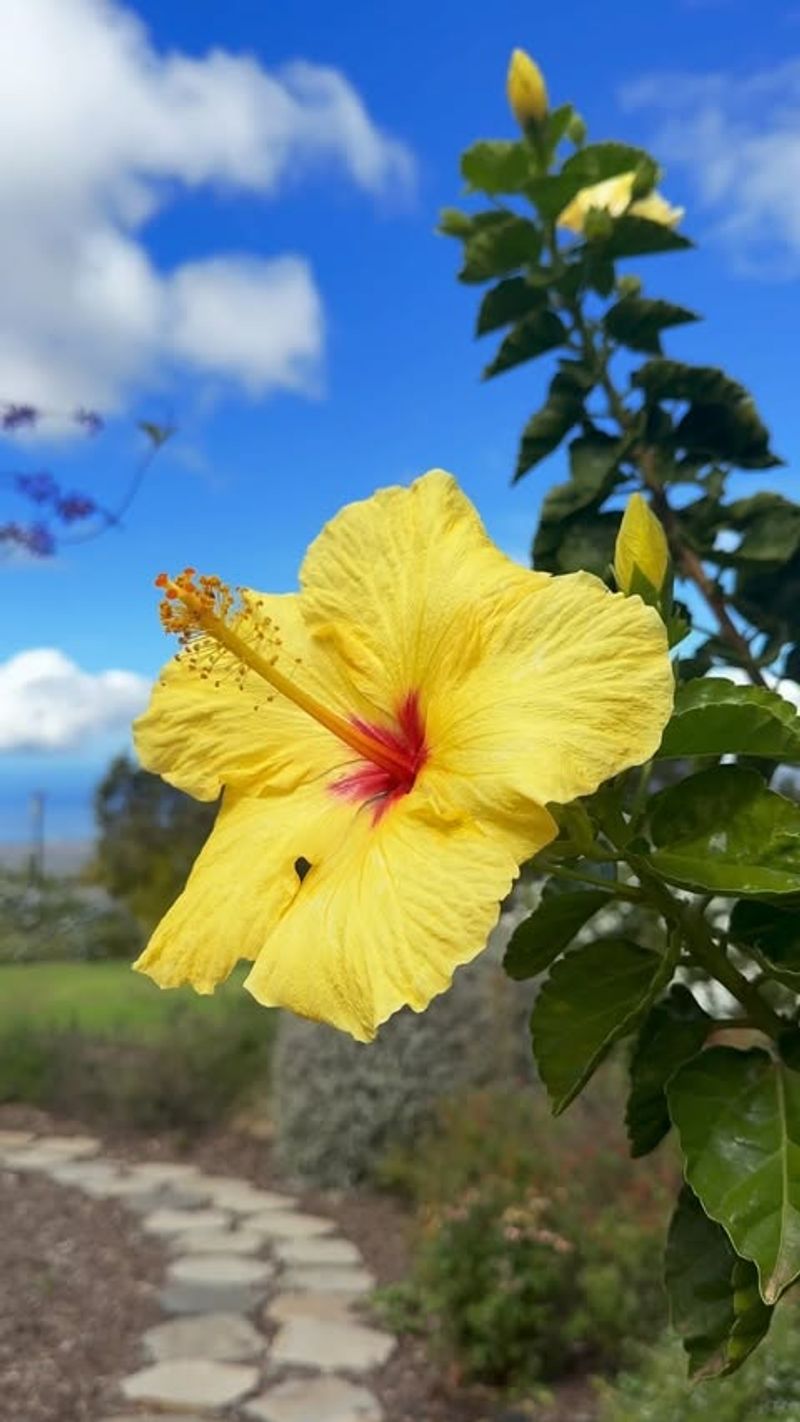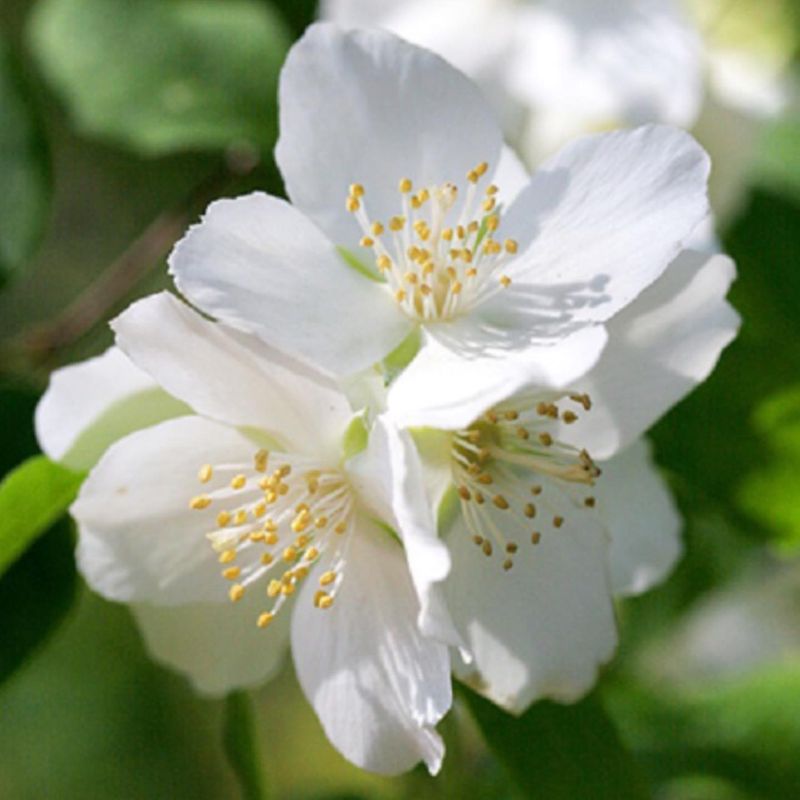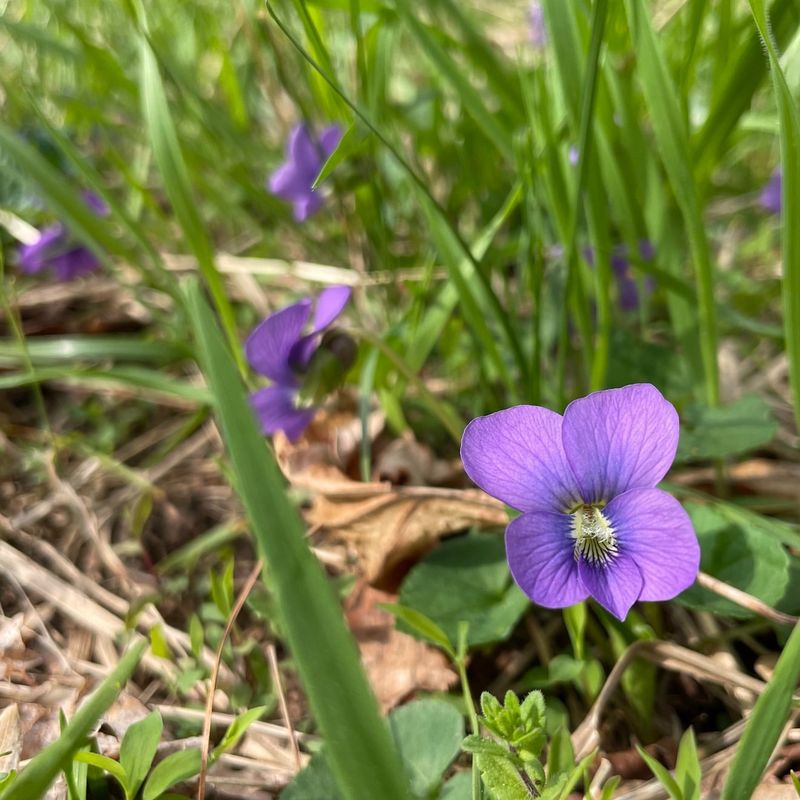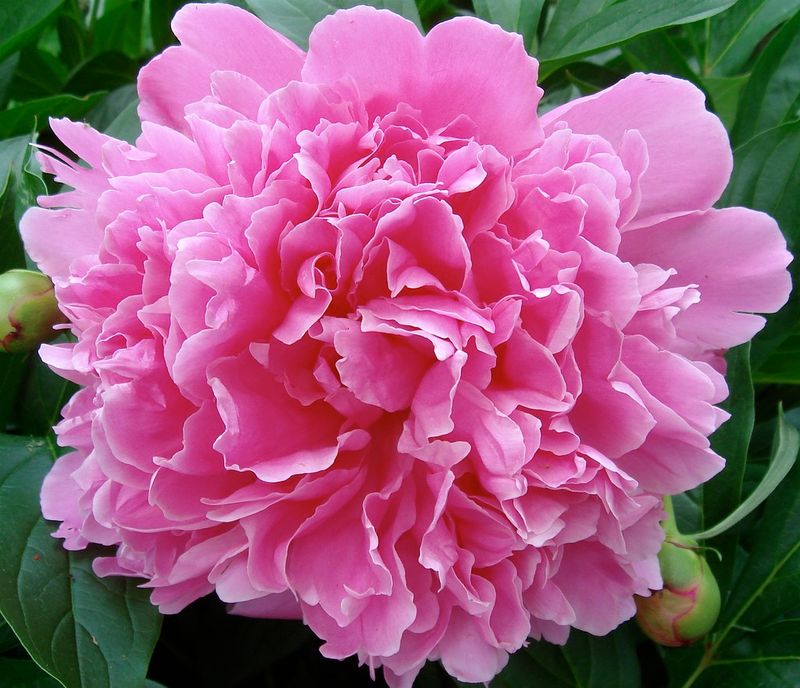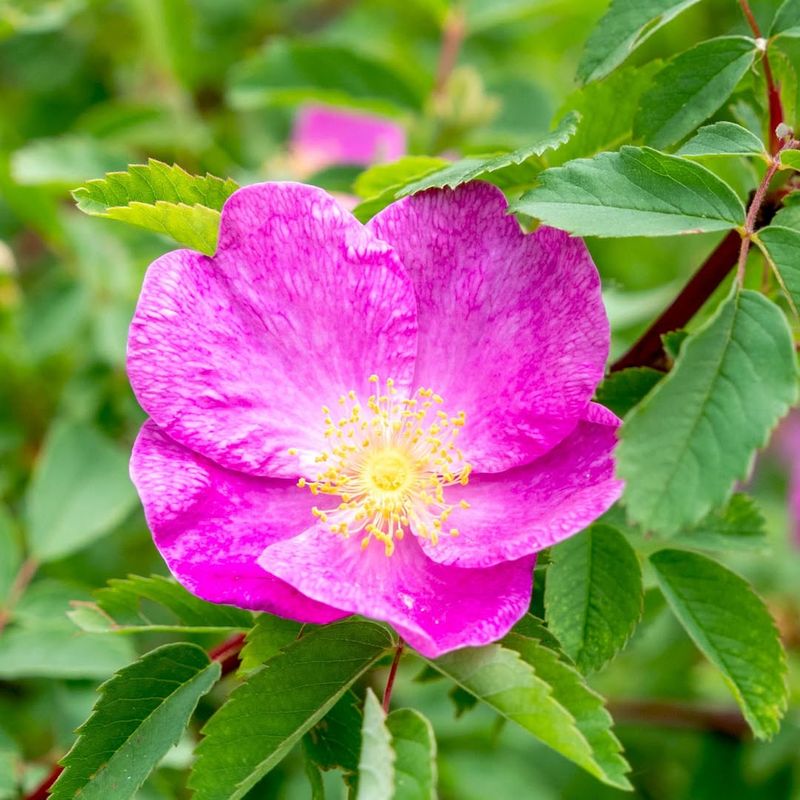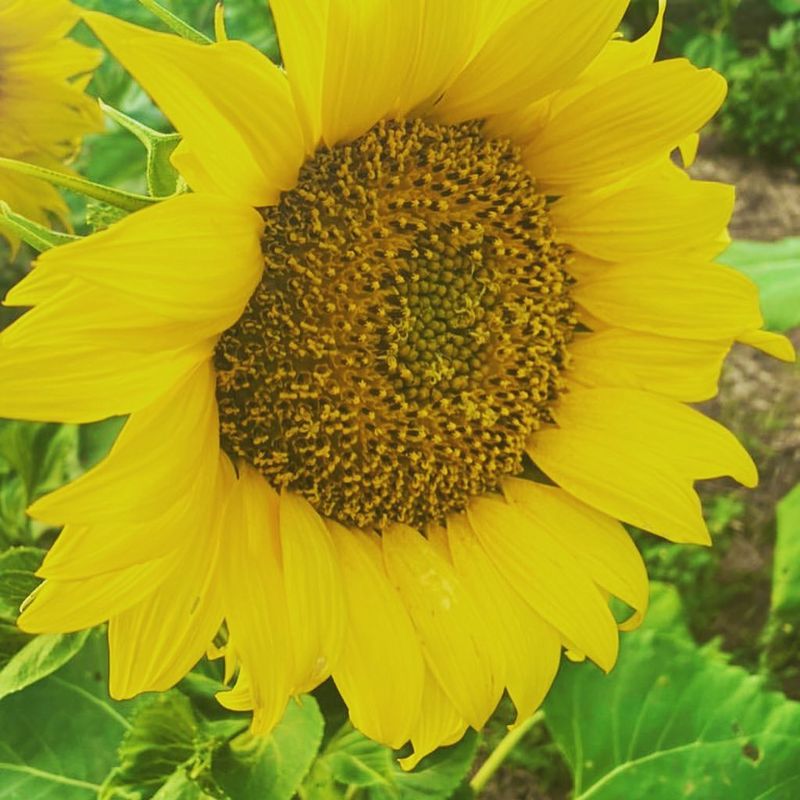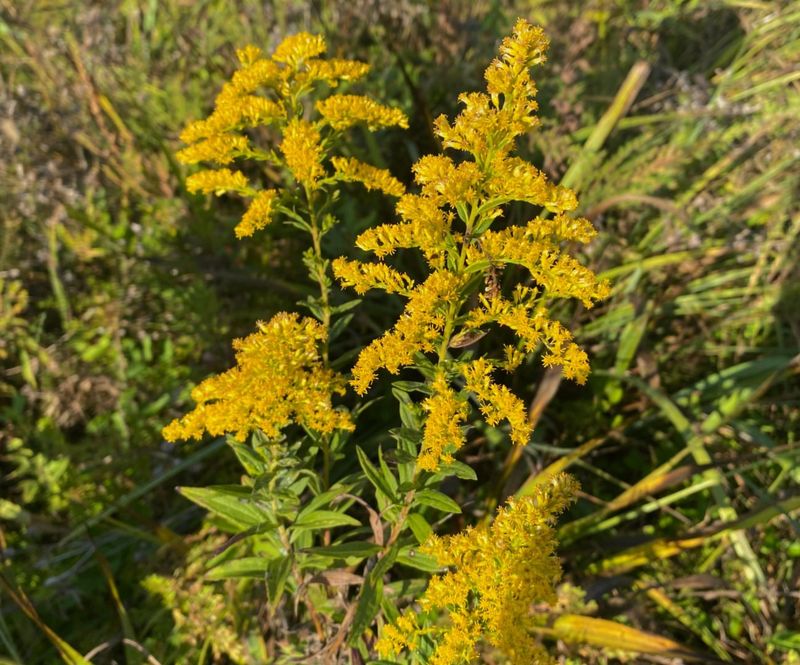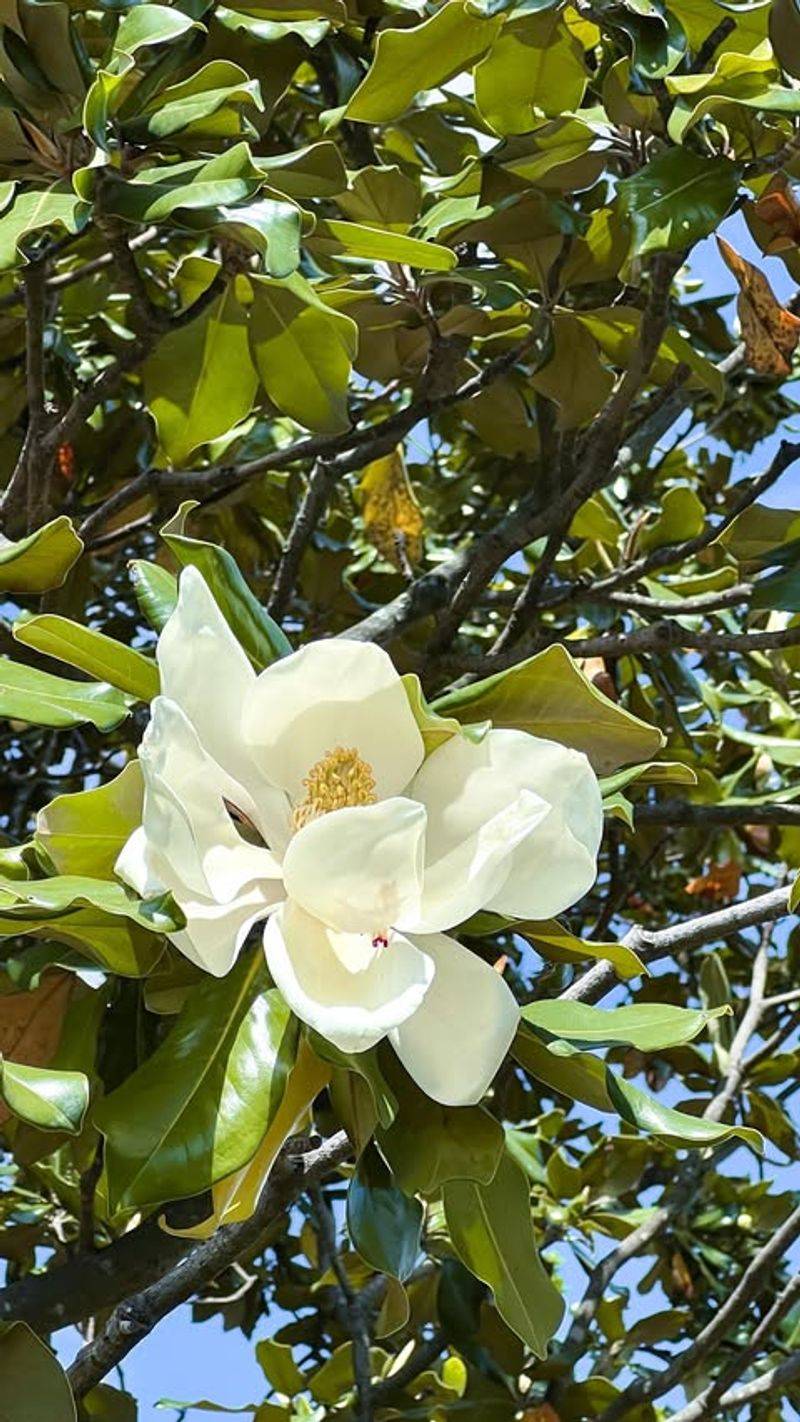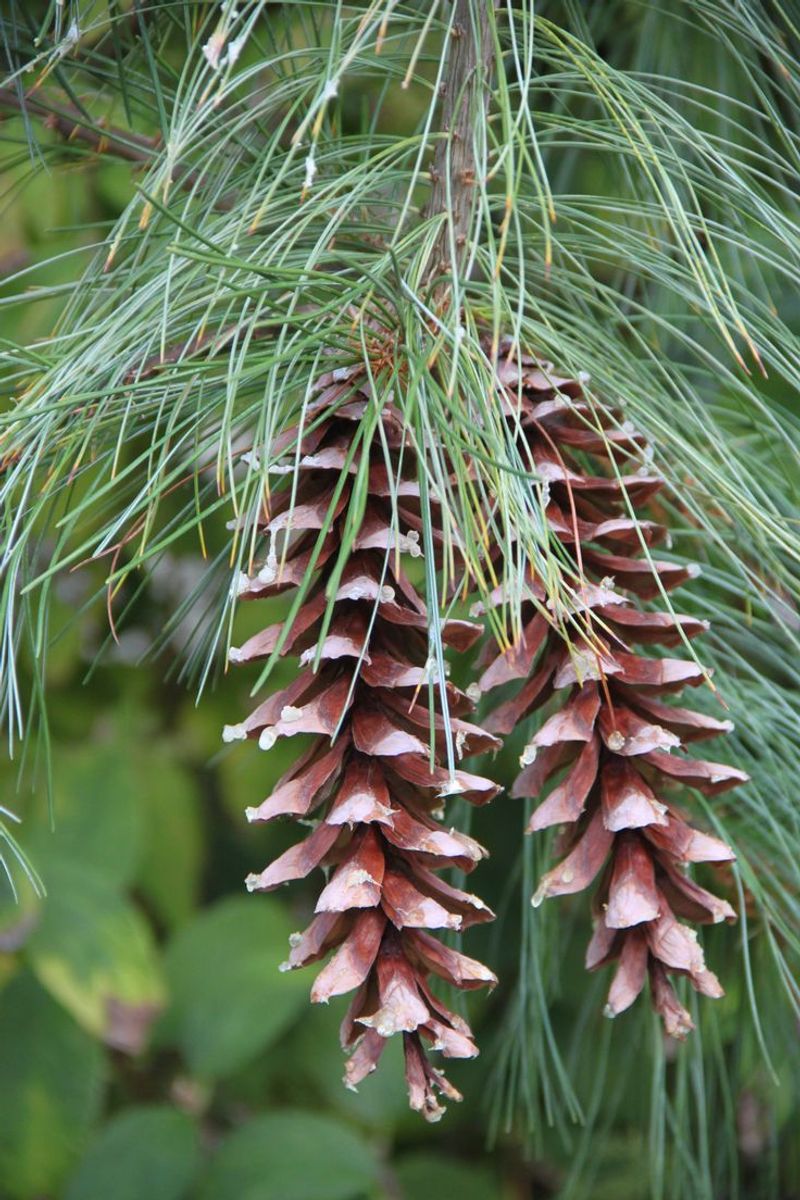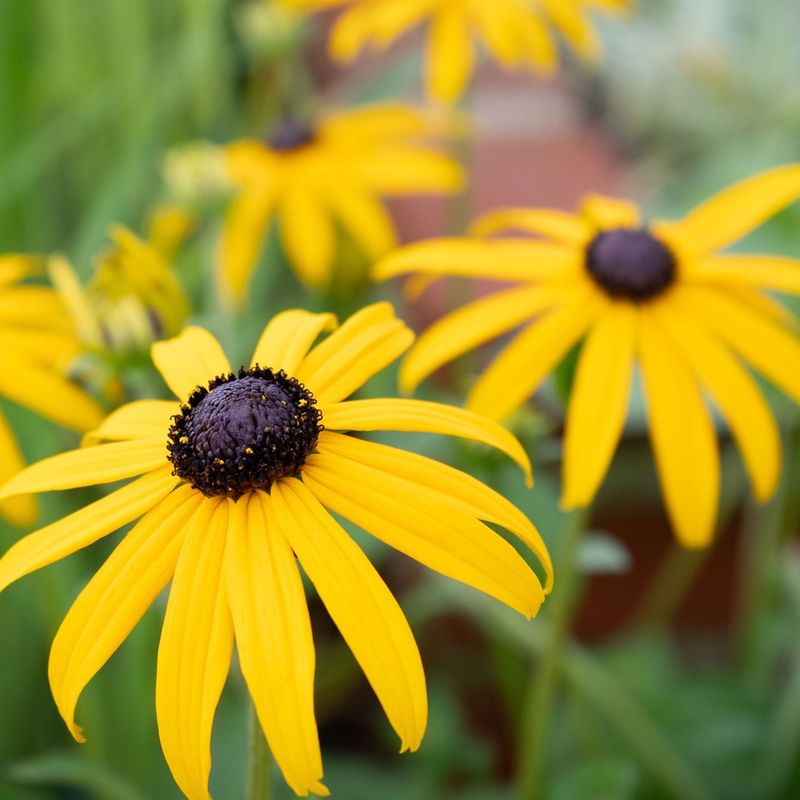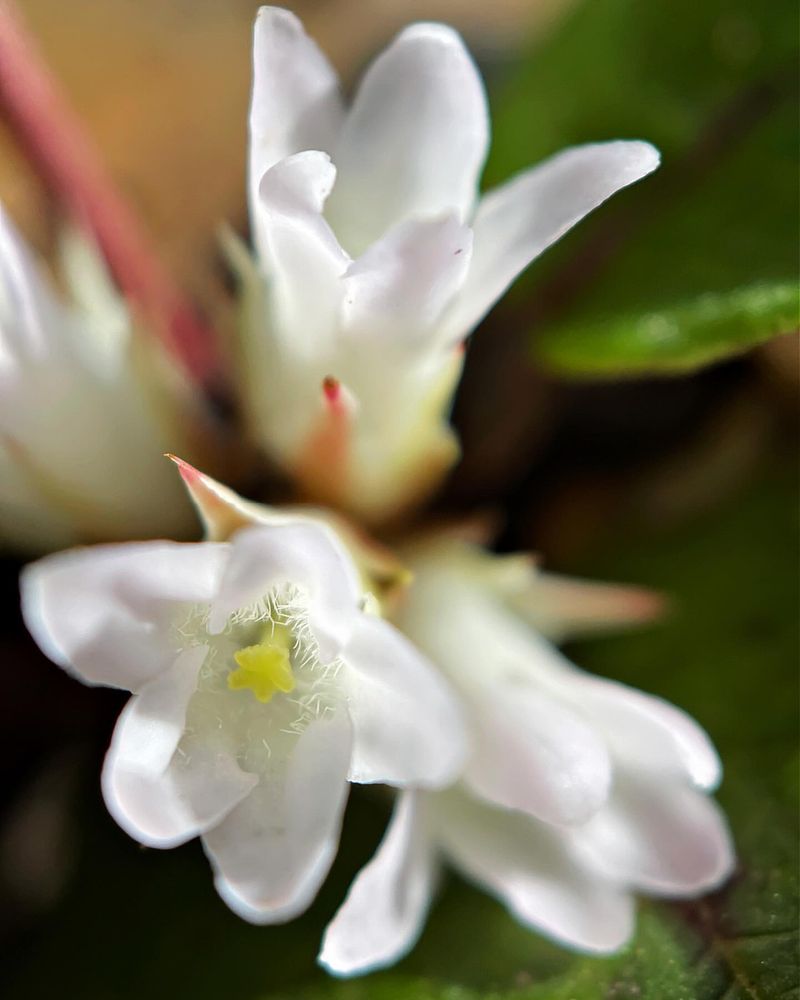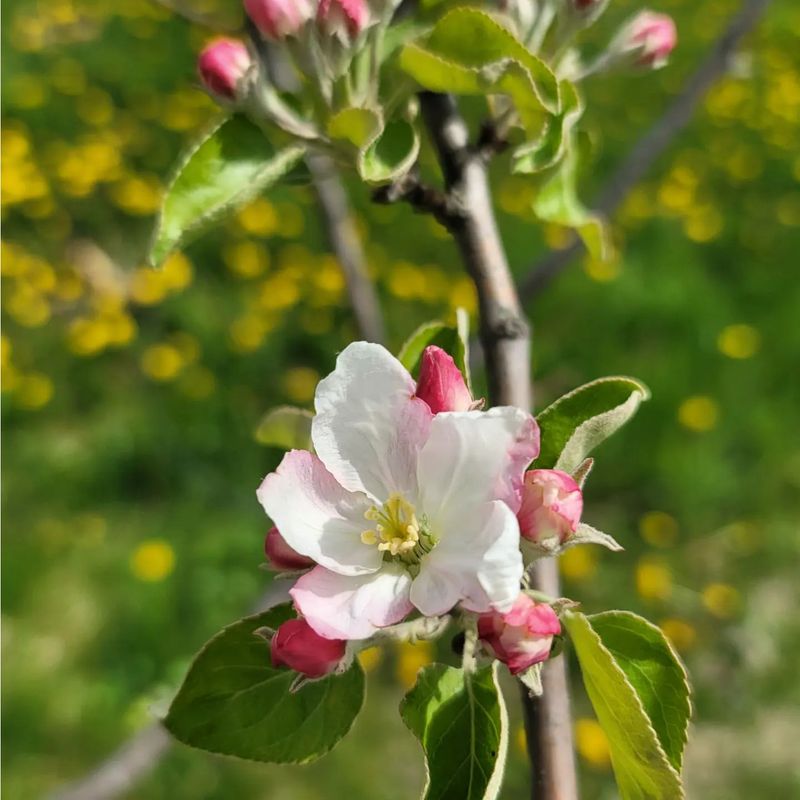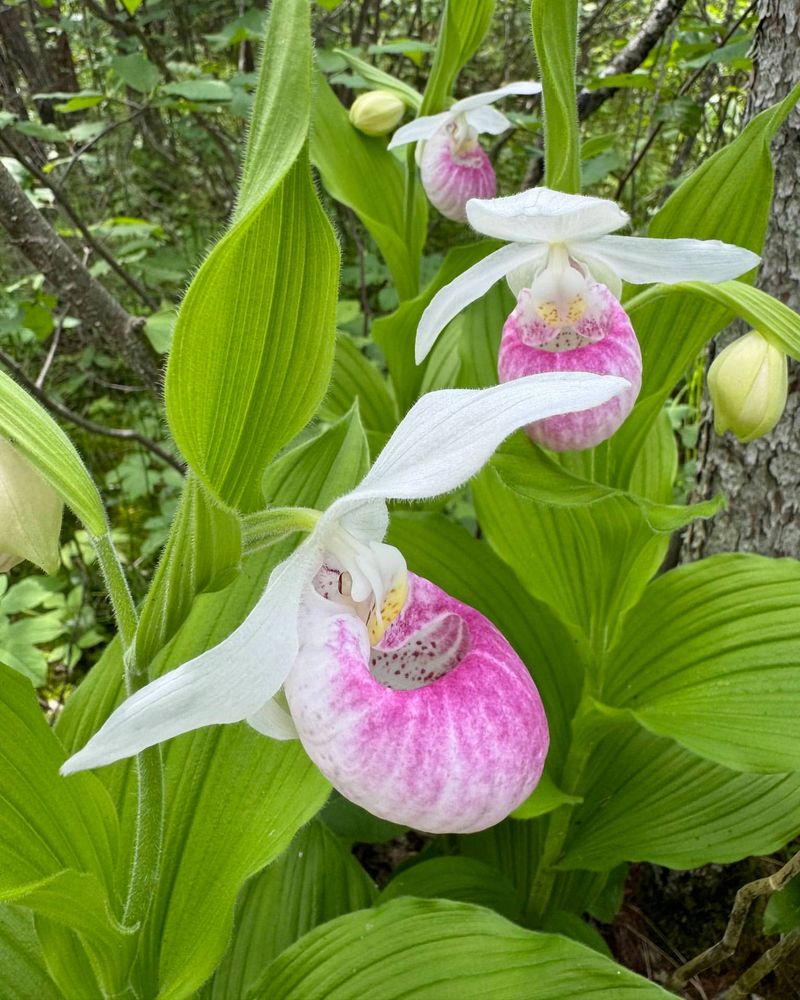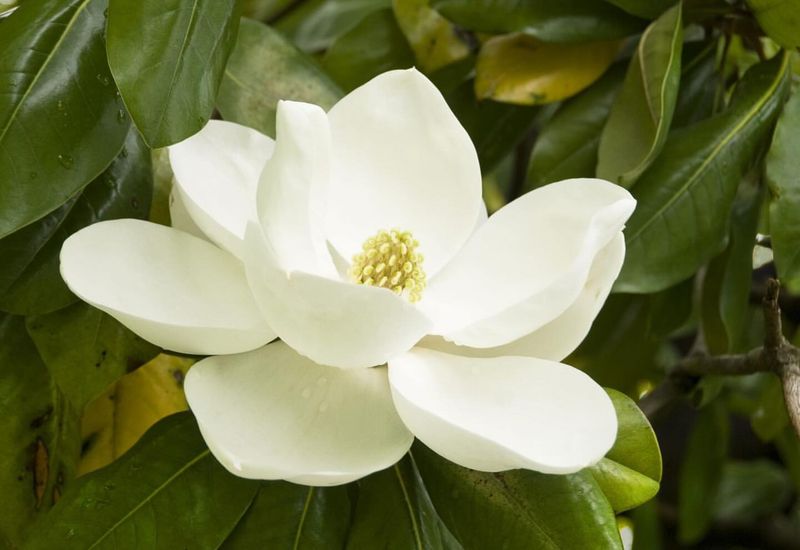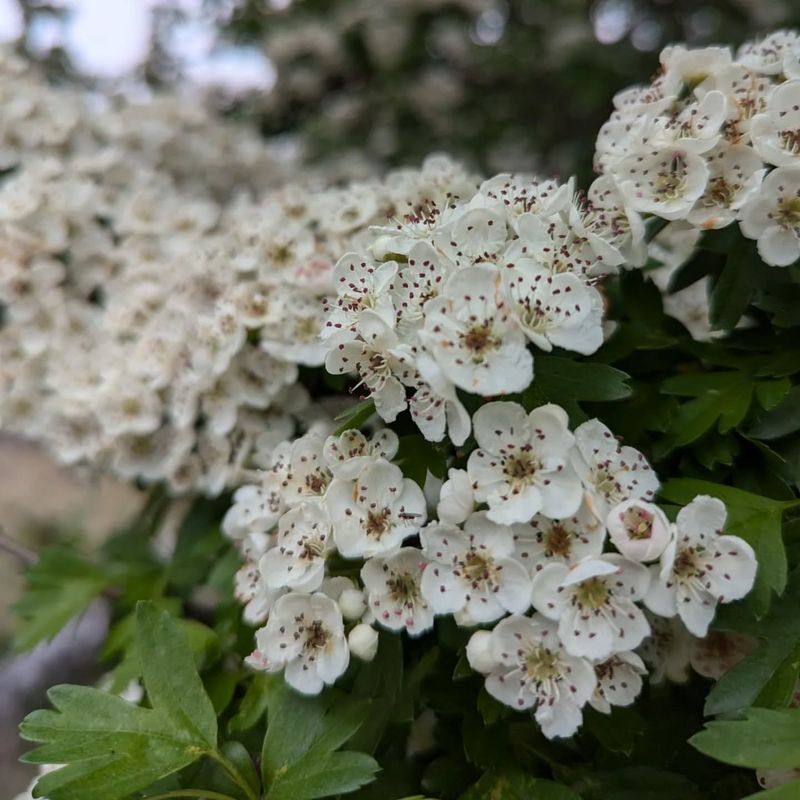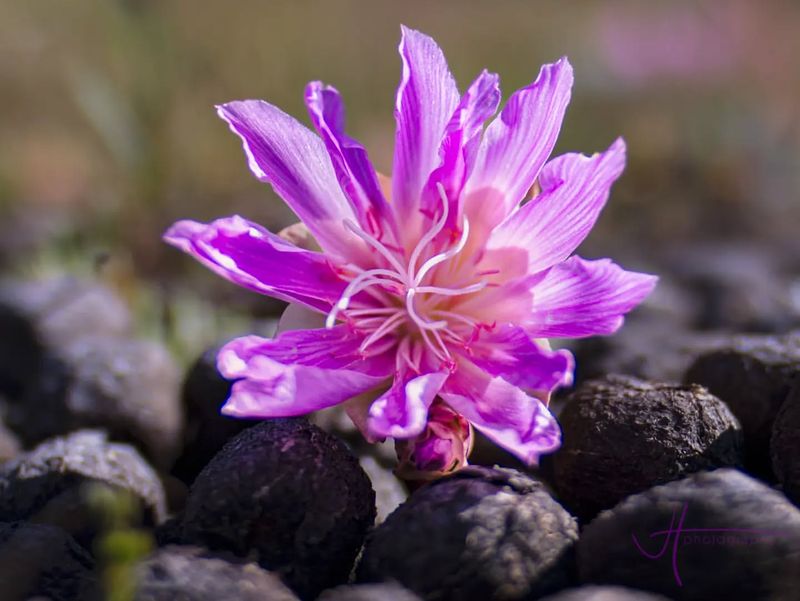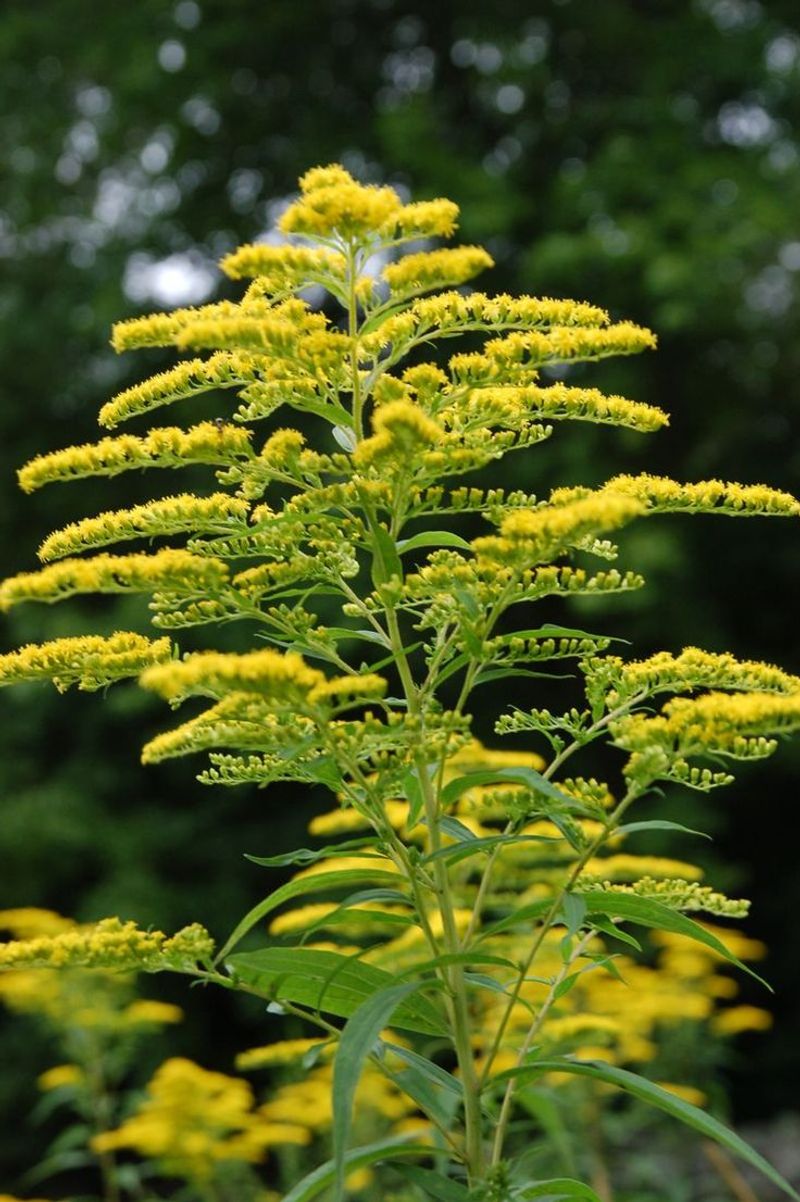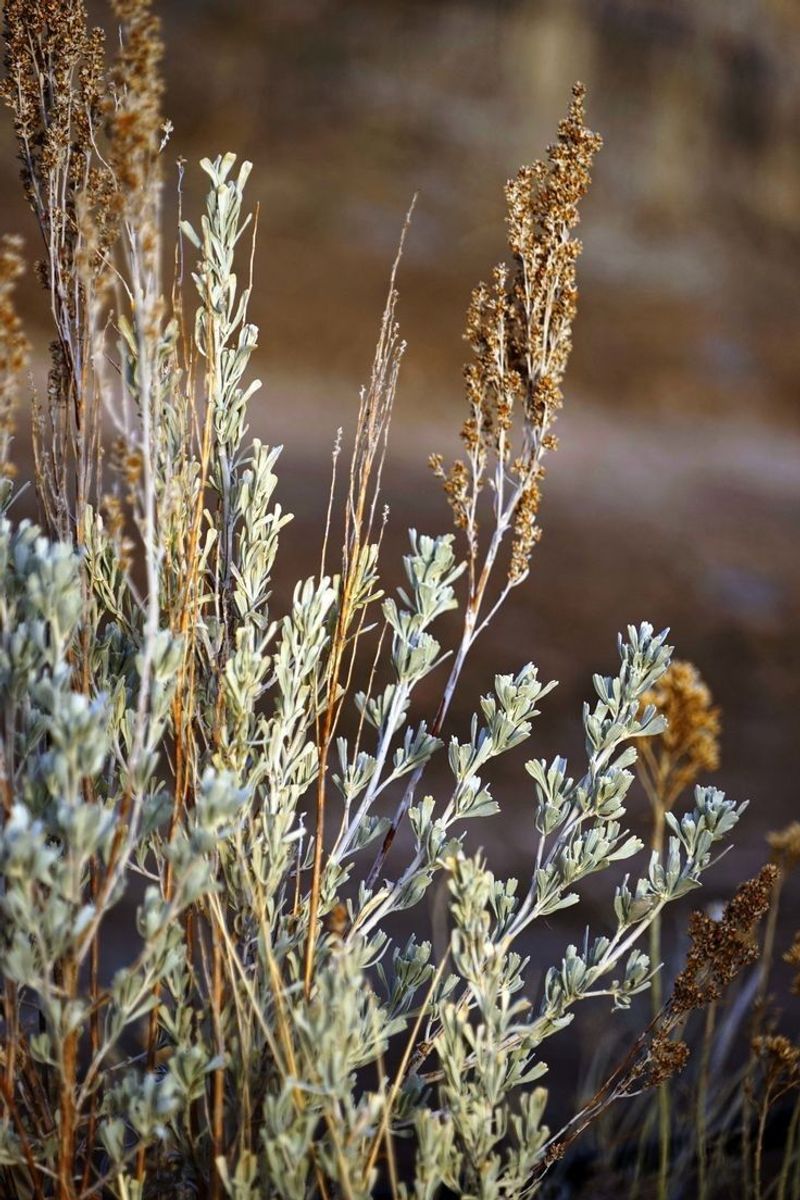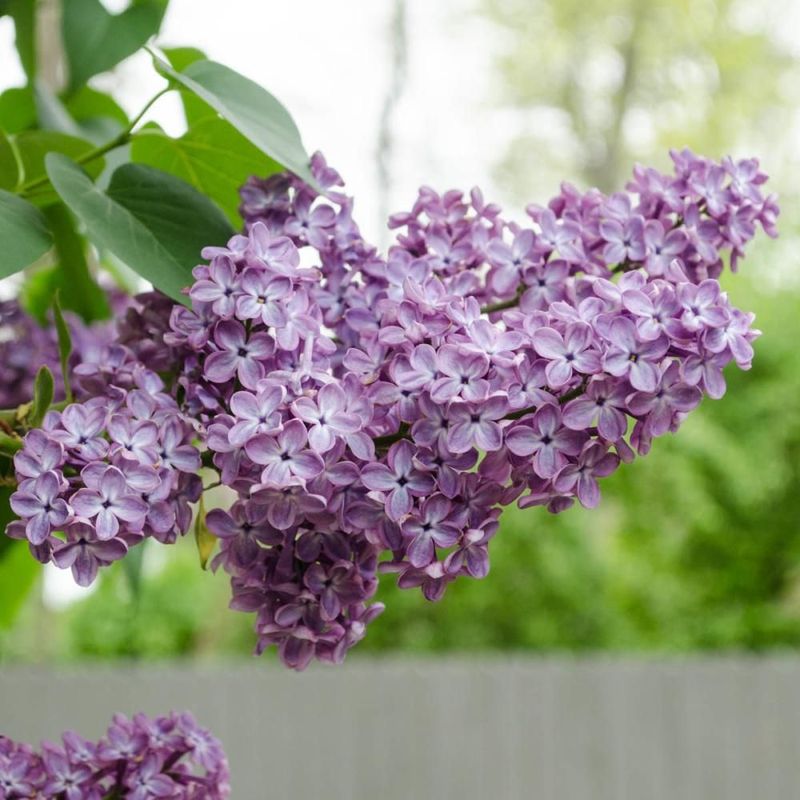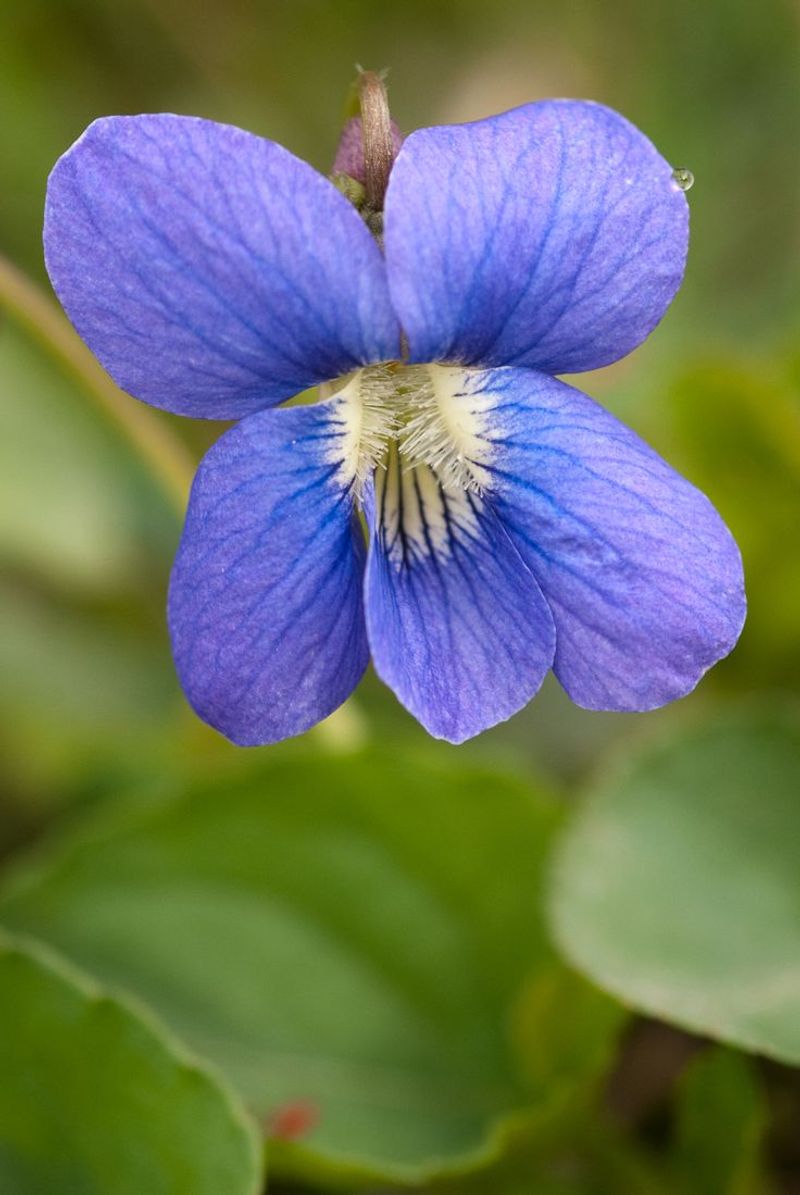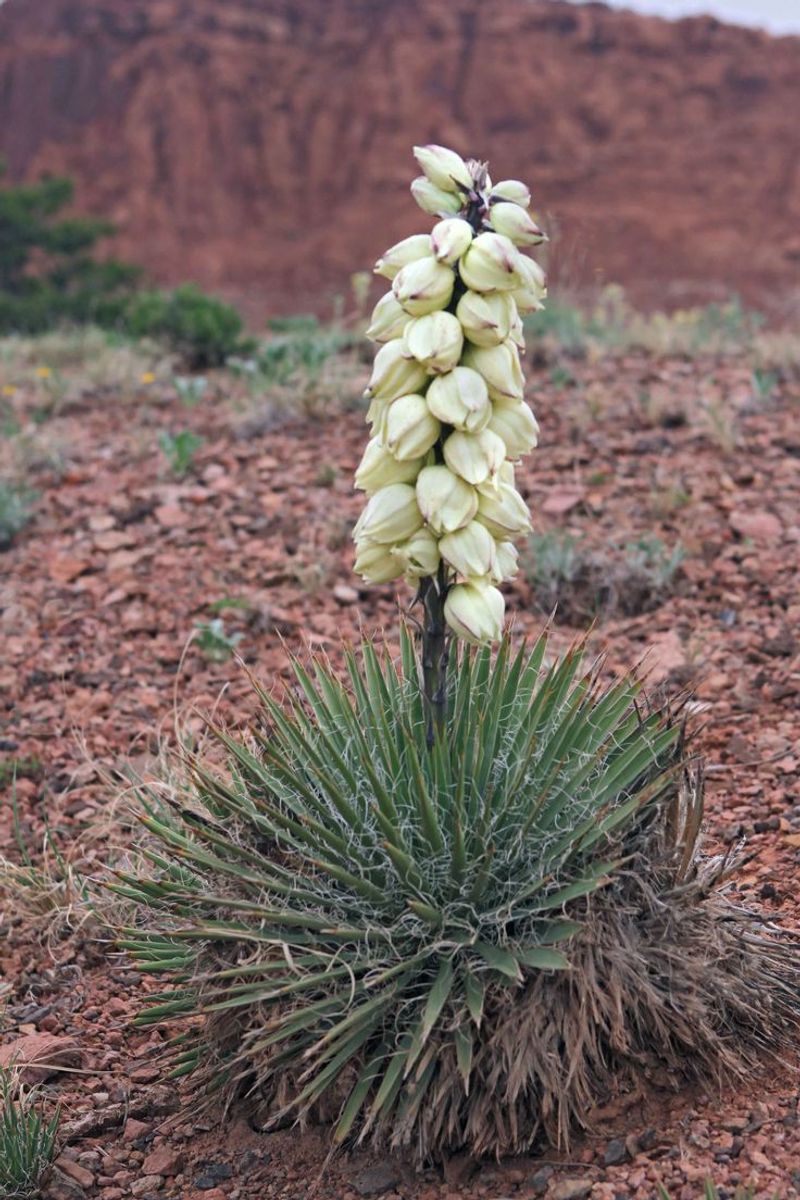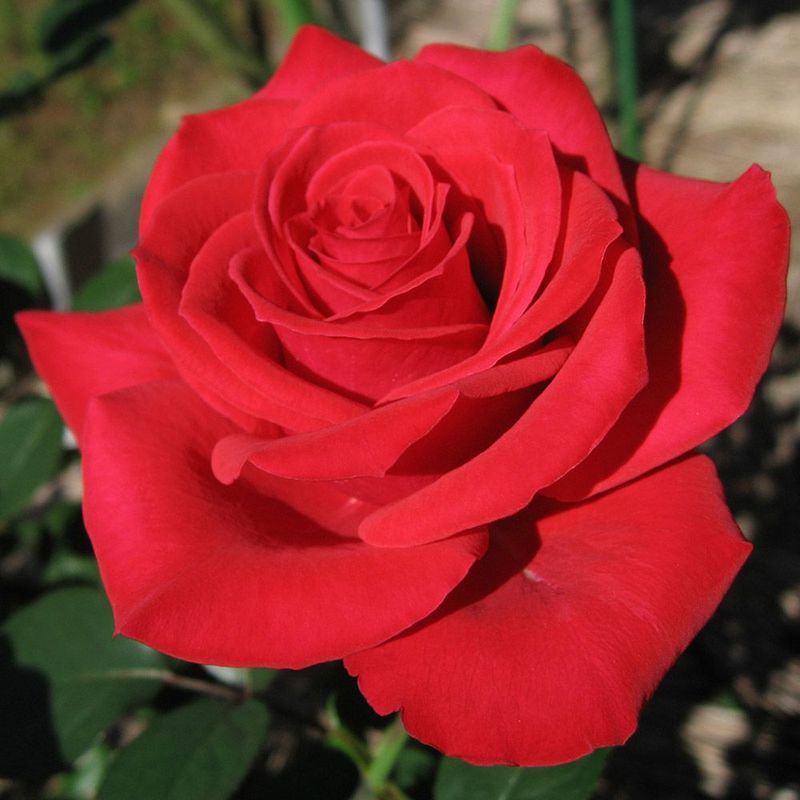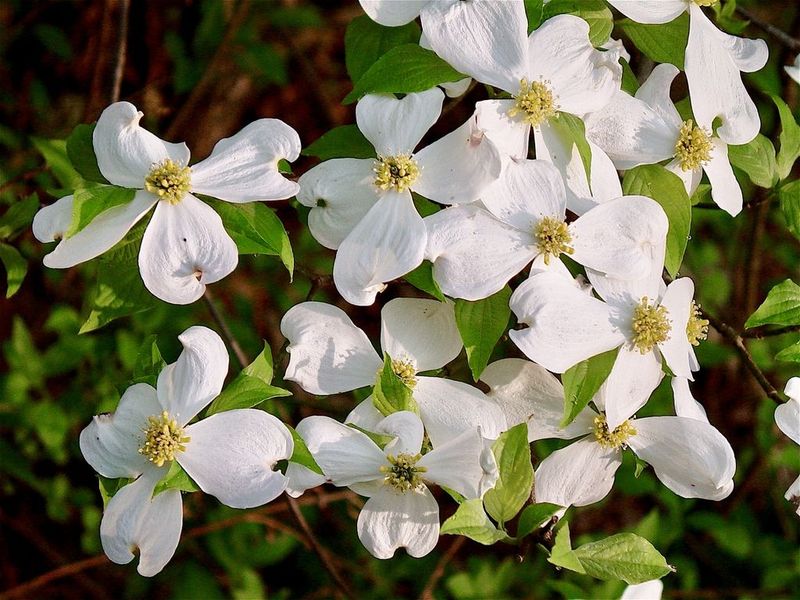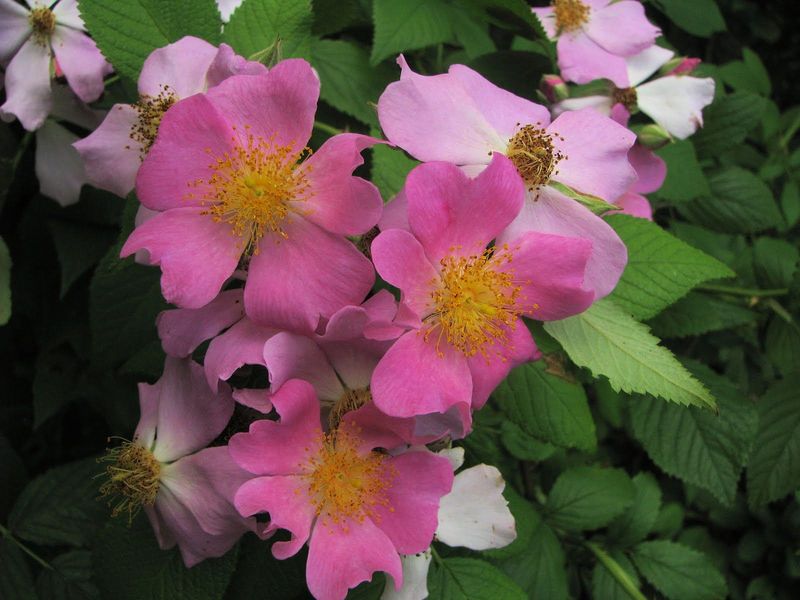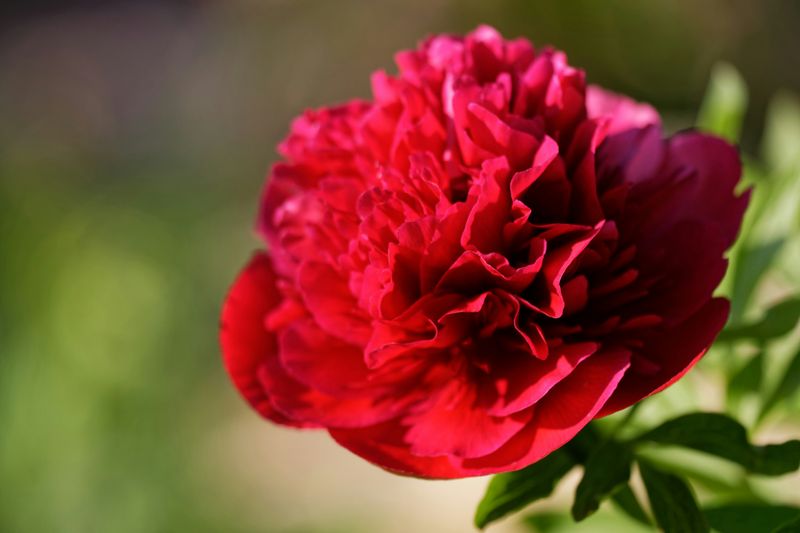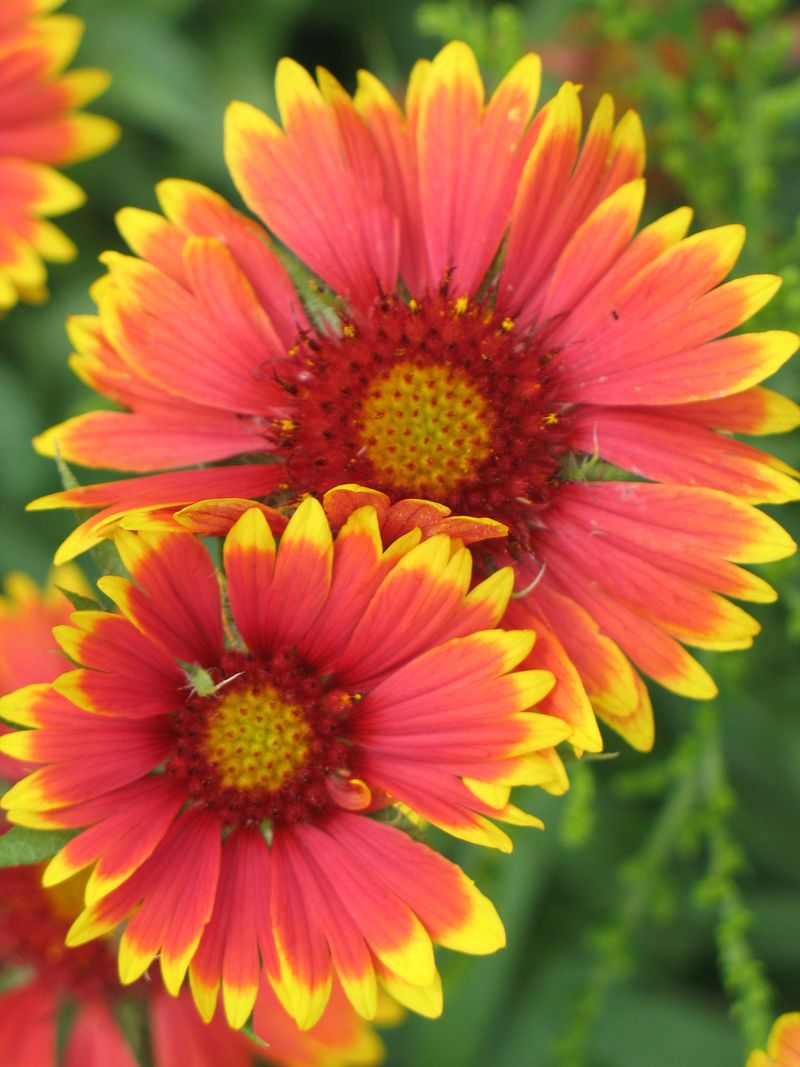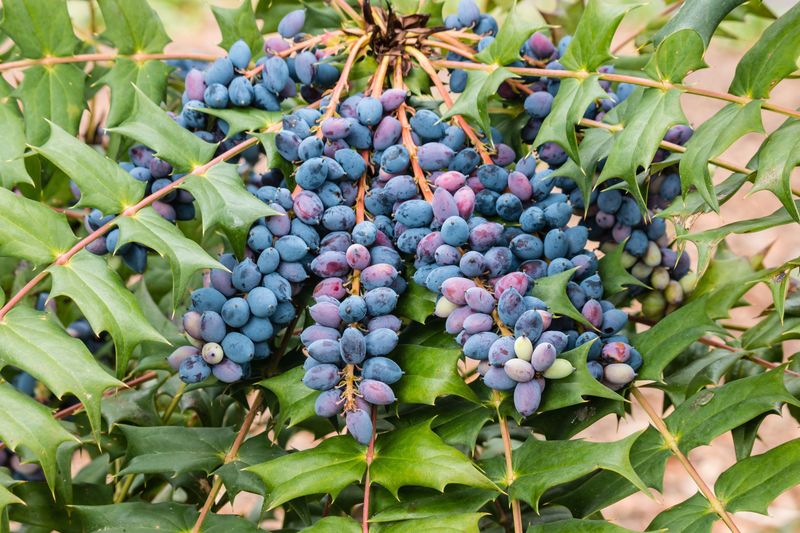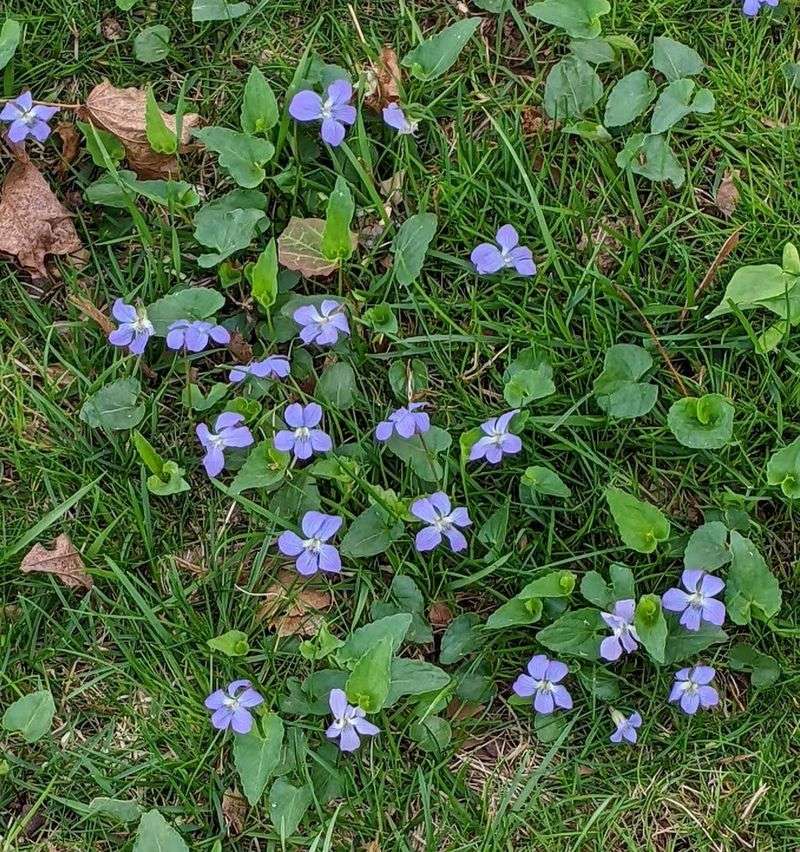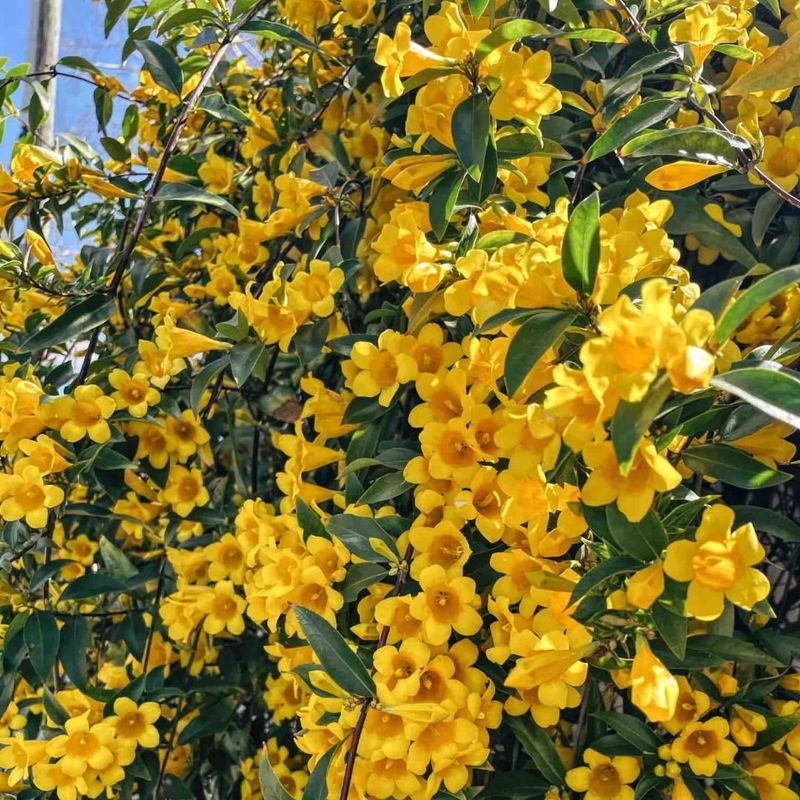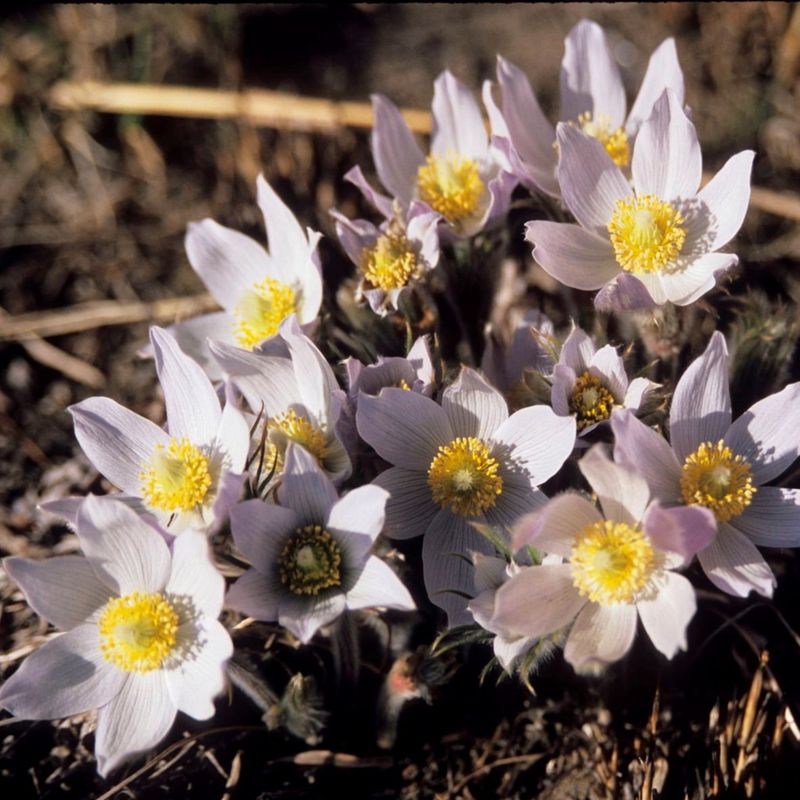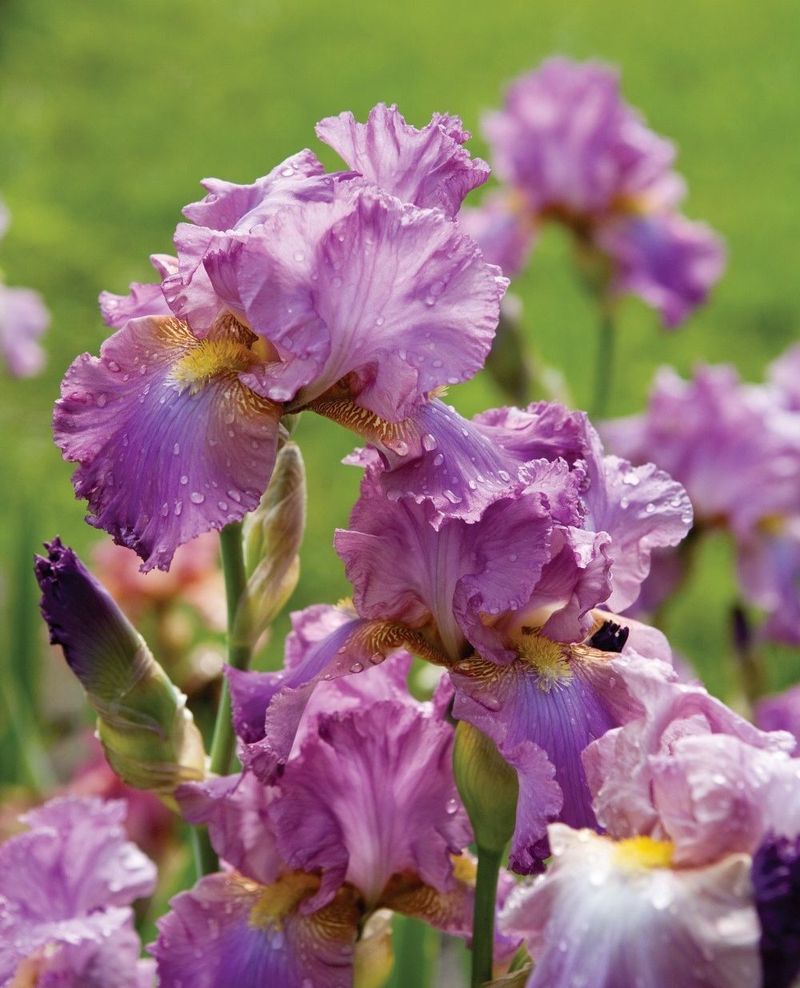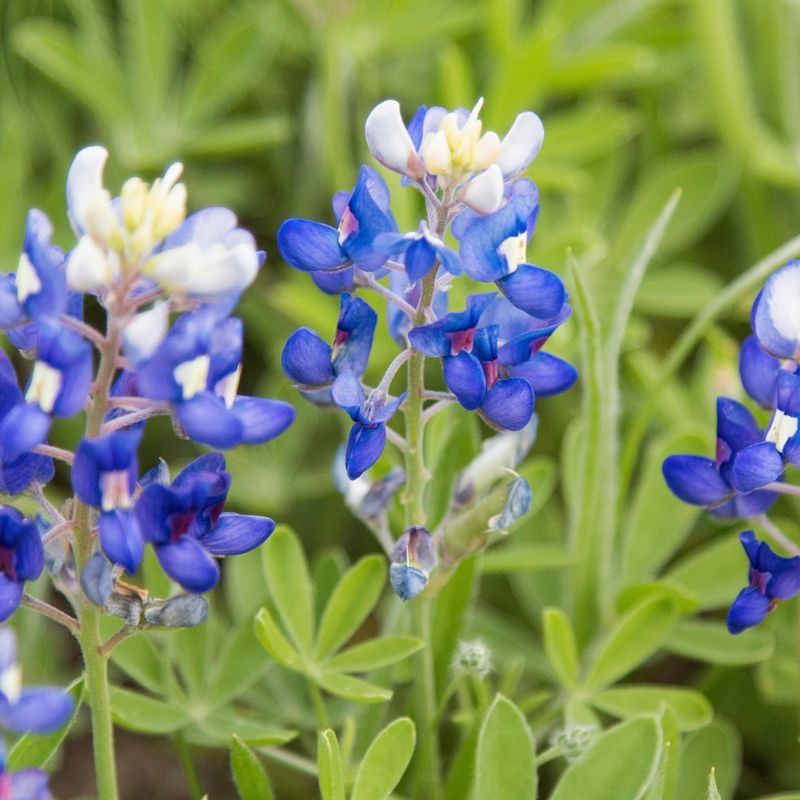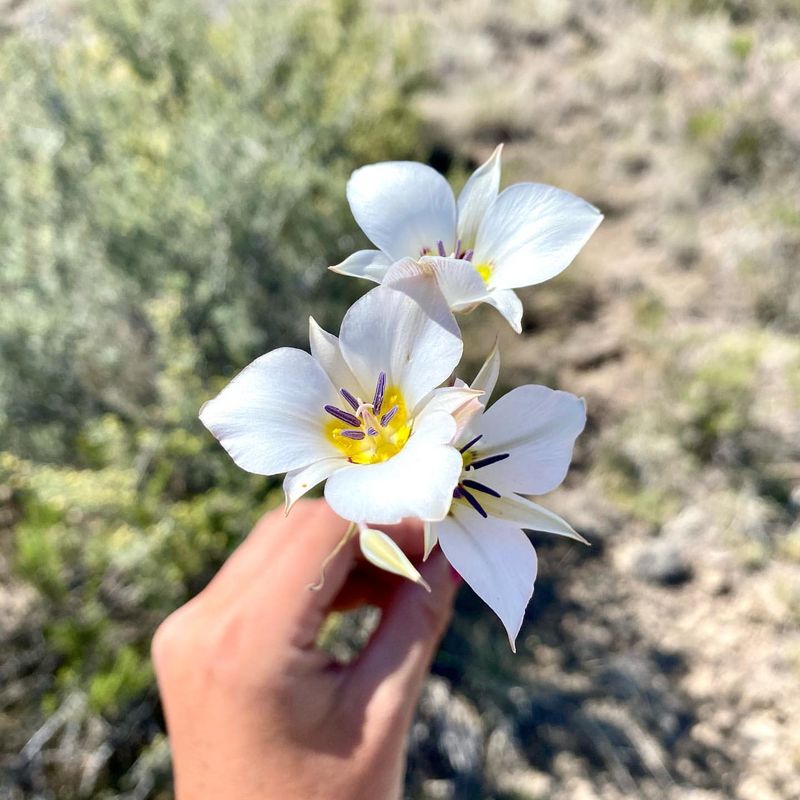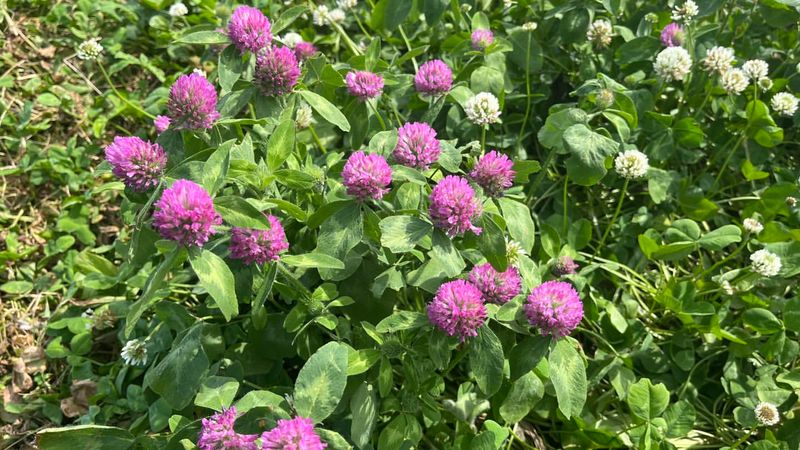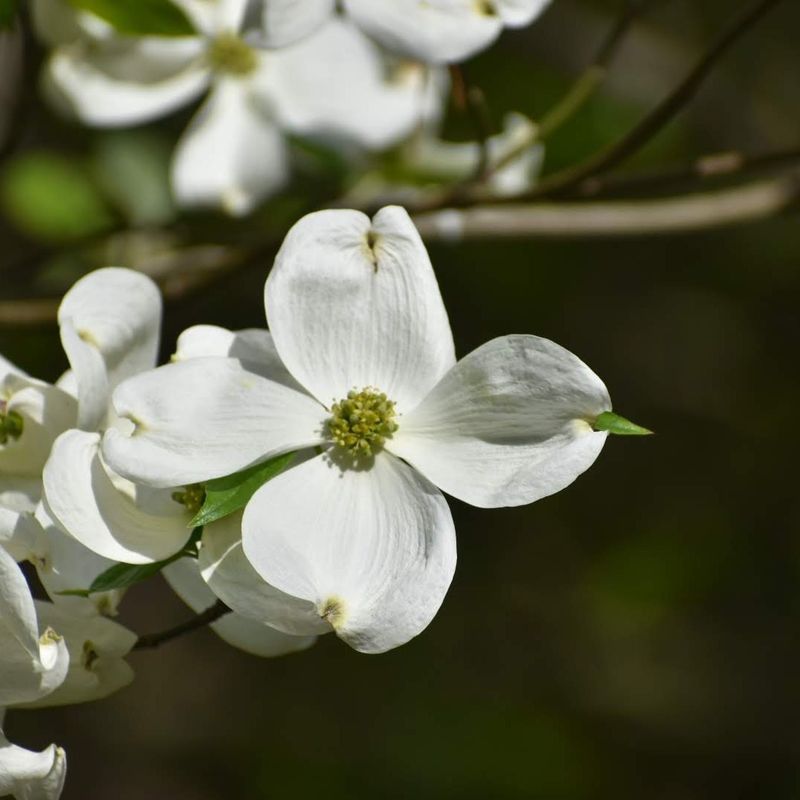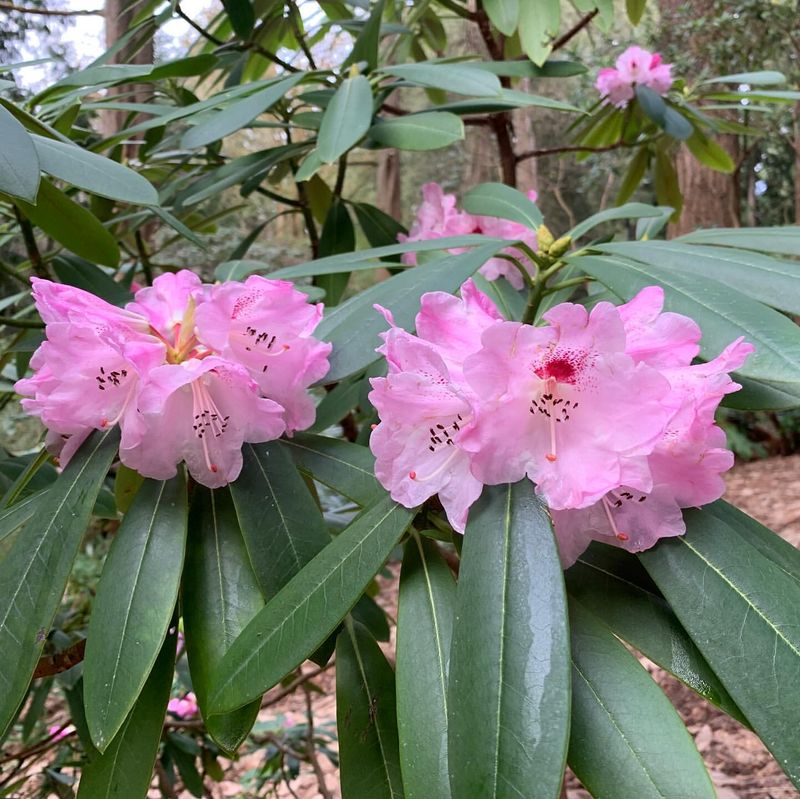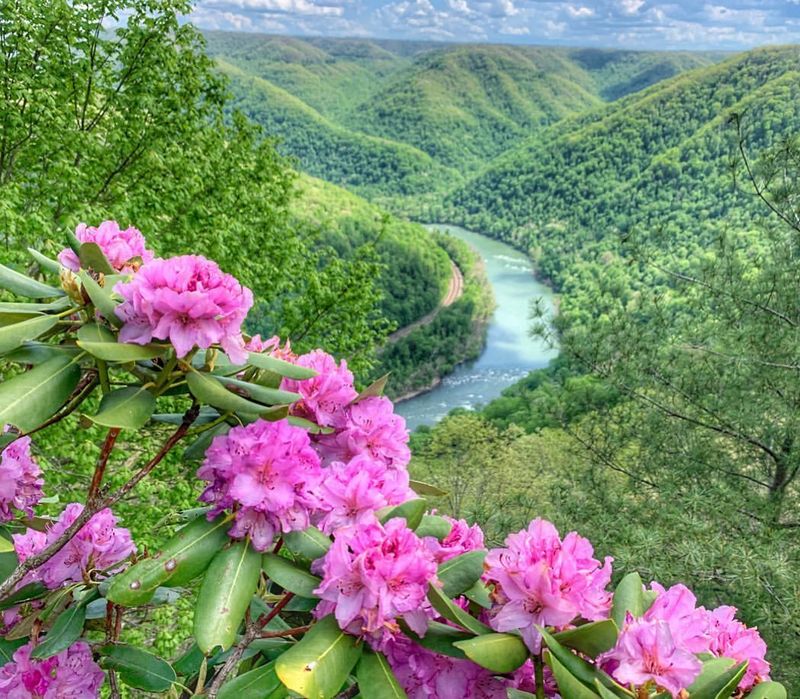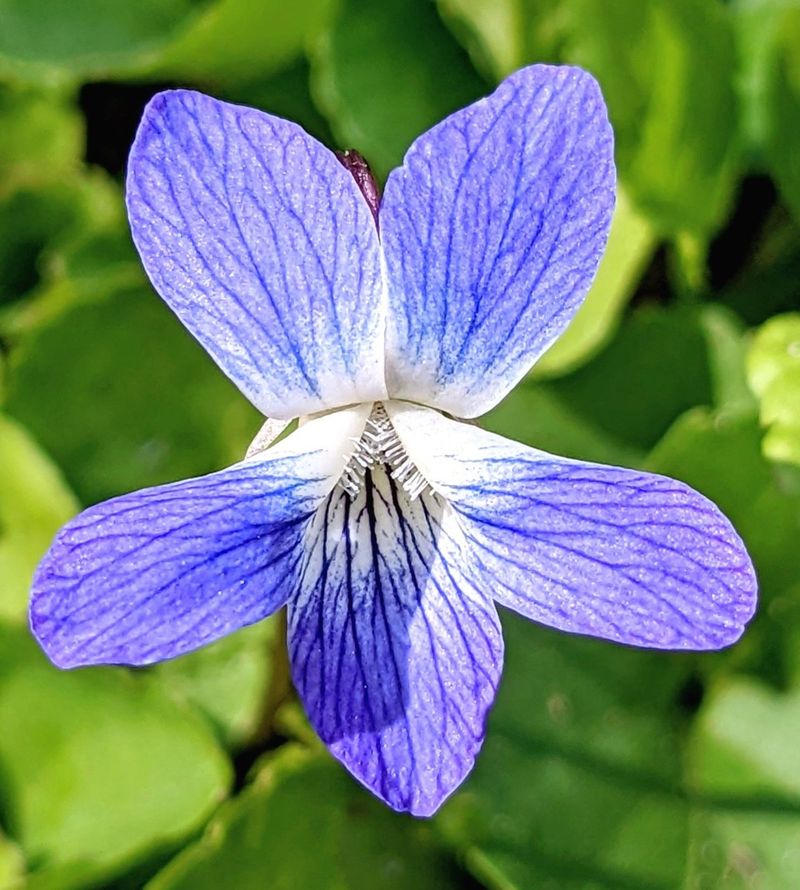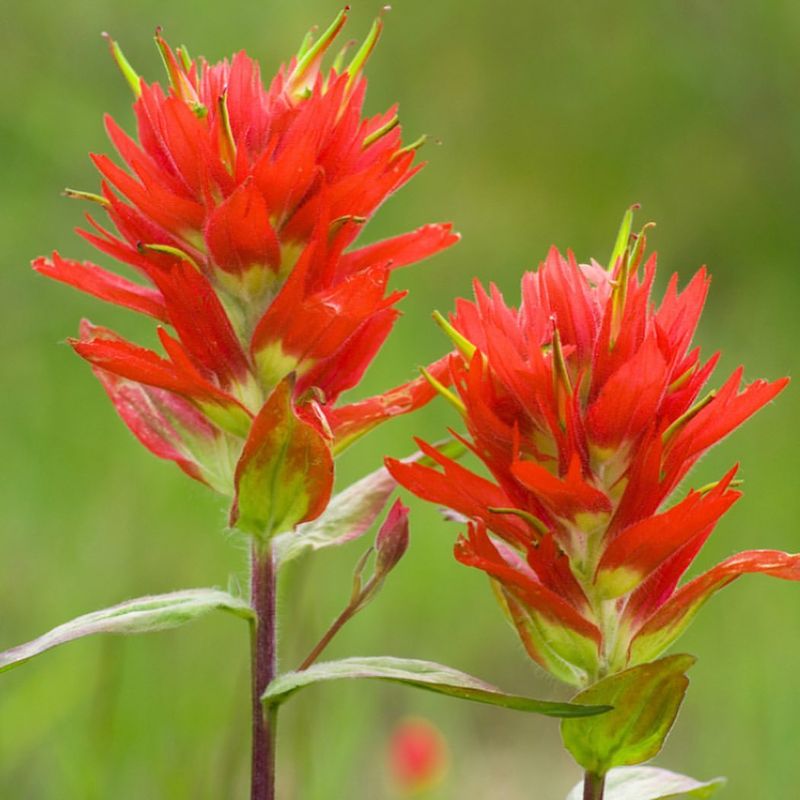Explore an enchanting array of native plants, each with its unique charm, representing the diverse landscapes of the United States.
From the sun-kissed deserts of Arizona to the lush forests of Washington, these plants are more than just flora; they are emblematic of the beauty and diversity found in every corner of the fifty states.
1. Alabama: Oak-Leaf Hydrangea
The Oak-Leaf Hydrangea blooms vibrantly in Alabama’s landscapes, offering stunning white flower clusters. This plant thrives in shady areas, making it perfect for southern gardens. Its unique lobed leaves give it an oak-like appearance, adding texture to any garden.
Alabama gardeners cherish this plant not only for its beauty but also for its adaptability. It thrives in the state’s warm climate, making it a staple in local landscapes.
For those looking to cultivate a picturesque, low-maintenance garden, the Oak-Leaf Hydrangea is an excellent choice.
2. Alaska: Fireweed
Fireweed, Alaska’s floral gem, paints the landscape with its vibrant pink-purple blooms. Known for flourishing in open spaces, it signals the end of winter.
This resilient plant is more than a visual delight; it plays a crucial role in the local ecosystem, providing food for pollinators. Its ability to thrive in harsh conditions is a testament to nature’s adaptability.
For those visiting Alaska, a view of the Fireweed in full bloom is a must-see, offering a splash of color against the rugged wilderness.
3. Arizona: Saguaro Cactus
The iconic Saguaro Cactus defines Arizona’s desert landscapes, standing tall with its distinctive arms. It’s a symbol of the American Southwest and provides habitat for many desert creatures.
Arizona’s climate is perfect for these majestic giants, which can live for over 150 years. Their white flowers bloom at night, attracting pollinators like bats.
Visiting the Sonoran Desert offers an up-close view of these towering cacti, an unforgettable experience that captures the essence of the region’s unique beauty.
4. Arkansas: Apple Blossom
Apple Blossoms grace Arkansas with their delicate beauty each spring, marking the start of a fruitful season. These pink and white flowers fill the air with a sweet fragrance.
They symbolize the state’s agricultural heritage and are a favorite among local gardeners. The sight of an orchard in full bloom is not only a visual treat but also a hint of the delicious apples to come.
Cultivating Apple Blossoms is rewarding, providing beauty and bounty to Arkansas landscapes.
5. California: California Poppy
The California Poppy, with its vivid orange petals, blankets the state’s landscapes in a stunning display. As the official state flower, it symbolizes California’s natural beauty.
These resilient flowers thrive in the sun-drenched climate, blooming from spring through fall. Their presence is a delight for locals and visitors alike, embodying the spirit of the Californian landscape.
When in full bloom, fields of poppies create a breathtaking sea of color that is truly a sight to behold.
6. Colorado: Rocky Mountain Columbine
The Rocky Mountain Columbine, with its unique lavender and white petals, adorns Colorado’s high-altitude meadows. It’s a symbol of the state’s rugged beauty and adventurous spirit.
This flower thrives in alpine environments, showcasing resilience against harsh conditions. For hikers and nature lovers, spotting a Columbine during a trek offers a moment of wonder.
Its delicate beauty amidst rugged terrain is a reminder of the delicate balance found in nature.
7. Connecticut: Mountain Laurel
Mountain Laurel, Connecticut’s state flower, captivates with its pink and white blooms. Found in wooded areas, it adds a splash of color to the underbrush.
This plant is cherished for its ornamental value, enhancing gardens and natural landscapes alike. Its ability to thrive in shade makes it a favorite among gardeners looking to add beauty to less sunny spots.
Each spring, the sight of Mountain Laurel in bloom is a cherished event, signaling the arrival of warmer days.
8. Delaware: Peach Blossom
Delaware’s Peach Blossoms herald the arrival of spring with their soft pink flowers. These blossoms are a beloved sight in local orchards, symbolizing renewal and abundance.
Their delicate petals and sweet fragrance attract pollinators, playing a vital role in fruit production. For Delaware residents, the blooming of Peach Blossoms is not just a visual delight but a celebration of the cycle of life.
Cultivating these trees offers both beauty and a bountiful harvest, enriching gardens and orchards alike.
9. Florida: Saw Palmetto
The Saw Palmetto graces Florida’s landscapes with its distinctive fan-shaped fronds. Commonly found in coastal areas, it provides habitat for various wildlife.
These hardy plants are well-suited to the state’s warm, humid climate, thriving in sandy soils. Apart from its ecological benefits, Saw Palmetto is known for its medicinal properties, often used in herbal remedies.
For those exploring Florida’s natural areas, spotting a Saw Palmetto is part of the experience, showcasing the resilience and diversity of local flora.
10. Georgia: Cherokee Rose
The Cherokee Rose, with its pure white petals and golden center, blooms beautifully across Georgia. This plant is deeply rooted in the state’s history and culture.
Its vigorous growth makes it a resilient addition to gardens and landscapes. The Cherokee Rose is not only admired for its beauty but also for its historical significance, symbolizing endurance and hope.
For gardeners, it offers a low-maintenance option that adds elegance and tradition to any setting.
11. Hawaii: Hawaiian Hibiscus
The Hawaiian Hibiscus, with its bright yellow petals, symbolizes the tropical beauty of Hawaii. This flower thrives in the islands’ warm, humid climate, adding color to gardens and landscapes.
Its large, showy blooms are a favorite among locals and tourists alike, embodying the essence of Hawaiian paradise.
Beyond its beauty, the Hibiscus is a symbol of hospitality, often used in traditional Hawaiian leis. Cultivating this flower brings a touch of the tropics to any garden, offering a glimpse of island life.
12. Idaho: Syringa
Syringa, also known as the Mock Orange, fills Idaho’s landscapes with its fragrant white blooms. This shrub is cherished for its ornamental beauty and sweet scent.
Found in wild and cultivated settings, Syringa adds elegance to gardens with its lush foliage and abundant flowers. Its ability to thrive in various conditions makes it a popular choice among gardeners.
For those exploring Idaho’s outdoors, the sight and smell of Syringa in bloom offer a sensory delight, marking the arrival of summer.
13. Illinois: Violet
The Violet, with its charming purple flowers, brightens Illinois gardens each spring. These delicate blooms are a favorite among gardeners for their beauty and resilience.
Violets thrive in shady areas, making them ideal for adding color to less sunny spots. Their presence in gardens and wild areas offers a touch of natural elegance.
Beyond aesthetics, Violets are valued for their medicinal properties, traditionally used in herbal remedies. Cultivating Violets provides both beauty and benefits, enhancing the diversity of any garden.
14. Indiana: Peony
In Indiana, Peonies are celebrated for their large, fragrant blossoms that add a splash of color to gardens. These perennials are a favorite among local gardeners.
Their lush, layered petals make them a standout feature in any landscape. Peonies thrive in Indiana’s climate, offering blooms each spring that are eagerly anticipated.
Beyond their beauty, they symbolize prosperity and good fortune, making them a cherished addition to gardens across the state. For those seeking to enhance their outdoor spaces, Peonies are a timeless choice.
15. Iowa: Wild Rose
The Wild Rose, with its delicate pink blossoms, adorns Iowa’s meadows and gardens. This flower is beloved for its natural charm and fragrance.
Growing abundantly in wild areas, it adds a touch of beauty to the landscape. For gardeners, cultivating Wild Roses offers a connection to nature’s elegance.
Beyond aesthetics, these flowers are known for their medicinal properties, traditionally used in herbal remedies. The sight of Wild Roses in bloom is a summer highlight, bringing joy to those who venture outdoors.
16. Kansas: Sunflower
Sunflowers, with their bright yellow petals and towering stems, fill Kansas landscapes with cheer. These iconic flowers are a symbol of the state’s agricultural heritage.
Their ability to follow the sun, known as heliotropism, adds a dynamic quality to fields. Sunflowers are not only visually striking but also beneficial, providing food and oil.
For those traveling through Kansas, fields of sunflowers offer a breathtaking sight, embodying the spirit of the state’s open spaces and sunny disposition.
17. Kentucky: Goldenrod
Goldenrod, with its bright yellow flowers, decorates Kentucky’s meadows and fields. This plant is cherished for its vibrant color and ecological benefits.
It provides food for pollinators, playing a crucial role in local ecosystems. Beyond its beauty, Goldenrod is valued for its medicinal uses, traditionally crafted into herbal remedies.
For those exploring Kentucky’s natural areas, the sight of Goldenrod in full bloom is a testament to the state’s rich biodiversity. Cultivating this plant brings a touch of sunshine to gardens and wild spaces alike.
18. Louisiana: Magnolia
In Louisiana, the Magnolia tree is celebrated for its large, fragrant white flowers and glossy leaves. This tree is an iconic symbol of southern grace and beauty.
Its blooms add elegance to gardens and landscapes, offering a sensory delight with their intoxicating scent. Magnolias thrive in the state’s warm climate, embodying the spirit of the South.
For those looking to add a touch of classic charm to their gardens, Magnolias are an excellent choice, offering beauty and timeless appeal.
19. Maine: White Pine
Maine’s landscapes are graced by the towering White Pine, known for its straight trunk and soft needles. This tree is a symbol of the state’s natural beauty and forestry heritage.
White Pines provide habitat for wildlife and are valued for their timber. In Maine’s dense forests, these trees stand as sentinels of nature’s grandeur.
For those exploring the outdoors, the presence of a White Pine offers a moment of tranquility, reflecting the serene beauty of the northeastern woodlands.
20. Maryland: Black-Eyed Susan
The Black-Eyed Susan, with its vibrant yellow petals and dark centers, brightens Maryland’s landscapes. This cheerful flower is a favorite among gardeners and nature enthusiasts.
It thrives in sunny areas, adding a splash of color to gardens and wild spaces. Beyond its beauty, the Black-Eyed Susan is crucial for pollinators, providing food and habitat.
For those looking to cultivate a lively, pollinator-friendly garden, this flower is an ideal choice, offering both aesthetic appeal and ecological benefits.
21. Massachusetts: Mayflower
The Mayflower, with its small white blooms, is a cherished symbol of Massachusetts’ history and natural beauty. Found in woodlands, it heralds the arrival of spring.
This plant is admired for its delicate appearance and sweet fragrance. For locals, the blooming of Mayflowers is a sign of renewal and hope. Cultivating them in gardens provides a touch of understated elegance, reflecting the state’s rich heritage.
Exploring Massachusetts’ woodlands reveals these hidden gems, offering a glimpse into the region’s natural charm.
22. Michigan: Apple Blossom
Michigan’s Apple Blossoms, with their delicate pink and white flowers, mark the beginning of a fruitful season. These blossoms are celebrated for their beauty and fragrance.
In local orchards, they signal the promise of a bountiful apple harvest. Beyond aesthetics, the blossoms play a vital role in pollination, ensuring the production of delicious fruit.
For those visiting Michigan in spring, the sight of Apple Blossoms in full bloom is a visual and sensory delight, embodying the state’s agricultural richness.
23. Minnesota: Pink and White Lady’s Slipper
The Pink and White Lady’s Slipper, Minnesota’s state flower, enchants with its unique, delicate blooms. Found in forests, it represents the state’s natural beauty and biodiversity.
This orchid is cherished for its distinct appearance and rarity. For nature lovers, spotting a Lady’s Slipper in the wild is a special experience, offering a glimpse of Minnesota’s hidden gems.
Cultivating these orchids requires care, but their beauty makes the effort worthwhile, adding a touch of elegance to any garden setting.
24. Mississippi: Magnolia
The Magnolia tree, with its large, fragrant white flowers, is a symbol of Mississippi’s southern charm. This tree’s blooms add elegance to gardens and landscapes across the state.
Its glossy leaves and stately presence make it a favorite among gardeners. Magnolias thrive in Mississippi’s warm climate, offering beauty and fragrance.
For those looking to enhance their outdoor spaces, planting a Magnolia provides a timeless touch of grace, reflecting the classic appeal of the southern landscape.
25. Missouri: Hawthorn
Missouri’s landscapes are dotted with Hawthorn trees, celebrated for their small, white flowers and dense foliage. These trees add a touch of natural beauty to gardens and wild spaces.
Hawthorns are known for their resilience, thriving in various conditions. Their blossoms provide food for pollinators, supporting local ecosystems.
For those interested in attracting wildlife, planting Hawthorns offers both beauty and ecological benefits, enhancing the diversity of any outdoor area.
26. Montana: Bitterroot
Montana’s Bitterroot flower, with its delicate pink petals, graces mountain meadows with subtle beauty. This plant is a symbol of the state’s rugged landscapes and resilience.
Bitterroot thrives in rocky, well-drained soils, showcasing nature’s adaptability. For those exploring Montana’s outdoors, encountering a Bitterroot in bloom offers a moment of wonder, reflecting the intricate beauty of alpine environments.
Cultivating Bitterroot provides a connection to the region’s natural heritage, adding a unique touch to gardens.
27. Nebraska: Goldenrod
Goldenrod, with its vibrant yellow flowers, adorns Nebraska’s fields and meadows. This plant is valued for its cheerful color and ecological importance.
It provides food for pollinators, supporting the health of local ecosystems. Beyond beauty, Goldenrod is known for its medicinal properties, often used in herbal remedies.
For those exploring Nebraska’s natural areas, the sight of Goldenrod in full bloom is a testament to the state’s rich biodiversity, bringing a touch of sunshine to any landscape.
28. Nevada: Sagebrush
Sagebrush, with its silvery-green foliage, dominates Nevada’s desert landscapes. This plant is a symbol of the state’s arid beauty and resilience.
Known for its aromatic scent, Sagebrush is essential to the desert ecosystem, providing habitat and food for wildlife.
For those navigating Nevada’s deserts, the presence of Sagebrush offers a glimpse into the region’s unique natural heritage. Its ability to thrive in harsh conditions makes it a remarkable plant, reflecting the rugged charm of the western landscapes.
29. New Hampshire: Purple Lilac
In New Hampshire, Purple Lilacs fill gardens with their fragrant, purple blossoms each spring. These bushes are beloved for their ornamental beauty and sweet scent.
Lilacs thrive in the state’s temperate climate, adding elegance to landscapes. For gardeners, cultivating lilacs offers a chance to enjoy their visual and olfactory delights.
The blooming of Purple Lilacs is a seasonal highlight, marking the transition to warmer weather and inviting everyone to bask in the beauty of spring.
30. New Jersey: Violet
Violets, with their charming purple flowers, grace New Jersey gardens each spring. These delicate blooms are a favorite among local gardeners for their beauty and versatility.
Thriving in shady areas, Violets add color to less sunny spots, enhancing garden diversity. Beyond aesthetics, they are valued for their medicinal properties, traditionally used in herbal remedies.
Cultivating Violets in New Jersey provides both visual appeal and benefits, offering a touch of natural elegance to any landscape.
31. New Mexico: Yucca
The Yucca plant, with its striking white flowers, is a symbol of New Mexico’s desert landscapes. These hardy plants thrive in arid conditions, showcasing resilience and beauty.
Yucca is essential to the desert ecosystem, providing food and shelter for wildlife. For those exploring New Mexico’s deserts, encountering a Yucca in bloom is a memorable experience, reflecting the spirit of the southwestern wilderness.
Cultivating Yucca adds a touch of the desert’s unique charm to gardens and landscapes.
32. New York: Rose
Roses, with their vibrant blooms and sweet fragrance, are a beloved feature of New York gardens. These flowers symbolize love and beauty, captivating gardeners and onlookers alike.
Thriving in the state’s diverse climates, Roses offer a timeless elegance to any landscape. Beyond their aesthetic appeal, Roses are valued for their versatility, used in perfumes, cosmetics, and culinary creations.
For those seeking to enhance their gardens, Roses provide a classic touch of beauty and sophistication.
33. North Carolina: Dogwood
The Dogwood tree, with its elegant white flowers, is a symbol of North Carolina’s natural beauty. These trees add charm to gardens and landscapes, thriving in the state’s temperate climate.
Dogwoods are admired for their seasonal beauty, offering stunning blooms in spring and vibrant foliage in fall. Their presence enhances the visual appeal of any outdoor space.
For those cultivating gardens in North Carolina, Dogwoods provide a versatile and attractive option, celebrating the region’s botanical charm.
34. North Dakota: Wild Prairie Rose
The Wild Prairie Rose, with its delicate pink blooms, graces North Dakota’s fields and prairies. This flower is cherished for its simple beauty and resilience.
Growing abundantly in wild areas, it adds a touch of natural elegance to the landscape. For gardeners, cultivating Wild Prairie Roses offers a connection to the region’s natural heritage.
Beyond aesthetics, these flowers are known for their medicinal properties, traditionally used in herbal remedies, adding both beauty and benefits to any garden.
35. Ohio: Scarlet Carnation
The Scarlet Carnation, with its vivid red petals, is a symbol of Ohio’s beauty and pride. This flower adds a splash of color to gardens and landscapes, cherished for its bold appearance.
Carnations thrive in Ohio’s climate, providing blooms that are both resilient and stunning. Beyond aesthetics, they are valued for their use in floral arrangements and as symbols of love.
For those looking to enhance their gardens, Scarlet Carnations offer both beauty and sentiment, making them a cherished addition.
36. Oklahoma: Indian Blanket
The Indian Blanket, with its vibrant red and yellow flowers, brightens Oklahoma’s fields and meadows. This wildflower is a symbol of the state’s natural beauty and diversity.
Thriving in sunny areas, it adds a cheerful splash of color to the landscape. For gardeners, cultivating Indian Blankets offers a way to connect with the region’s wild charm.
Beyond aesthetics, these flowers attract pollinators, supporting local ecosystems. Their presence in gardens and wild spaces enhances biodiversity, offering beauty and ecological benefits.
37. Oregon: Oregon Grape
The Oregon Grape, with its bright yellow flowers and dark green leaves, is a symbol of Oregon’s natural beauty. This plant thrives in the state’s diverse climates, adding color to gardens and wild areas.
Beyond its aesthetic appeal, the Oregon Grape is valued for its medicinal properties, traditionally used in herbal remedies.
For those exploring Oregon’s forests, encountering an Oregon Grape in bloom is a delightful experience, reflecting the region’s rich biodiversity. Cultivating this plant offers both beauty and benefits, enhancing any garden.
38. Pennsylvania: Mountain Laurel
Mountain Laurel, with its striking pink and white blooms, enhances Pennsylvania’s woodlands with natural beauty. This plant is cherished for its ornamental value, adding color and elegance to gardens.
Thriving in shaded areas, it is a popular choice for enhancing less sunny spots. Beyond aesthetics, Mountain Laurel plays a role in local ecosystems, providing habitat for wildlife.
For gardeners, cultivating this plant offers a chance to connect with nature’s beauty, celebrating Pennsylvania’s rich botanical heritage.
39. Rhode Island: Violet
Violets, with their charming purple flowers, brighten Rhode Island gardens each spring. These delicate blooms are a favorite among gardeners for their beauty and resilience.
Thriving in shady areas, Violets add color to less sunny spots, enhancing garden diversity. Beyond aesthetics, they are valued for their medicinal properties, traditionally used in herbal remedies.
Cultivating Violets provides both visual appeal and benefits, offering a touch of natural elegance to any landscape.
40. South Carolina: Yellow Jessamine
Yellow Jessamine, with its bright yellow flowers, adorns South Carolina gardens and landscapes. This vine is admired for its cheerful blooms and sweet scent, adding beauty to outdoor spaces.
Thriving in the state’s warm climate, it offers a vibrant splash of color throughout the growing season. Beyond aesthetics, Yellow Jessamine is the state flower, symbolizing the spirit of South Carolina.
For gardeners, cultivating this vine offers both visual delight and a sense of state pride, enhancing any garden setting.
41. South Dakota: Pasque Flower
The Pasque Flower, with its delicate purple blooms, graces South Dakota’s prairies with subtle beauty. This plant is treasured for its early spring arrival, signaling the end of winter.
Thriving in open spaces, it adds a touch of elegance to wild areas. For gardeners, cultivating Pasque Flowers offers a connection to the natural rhythms of the prairie landscape.
Beyond aesthetics, these flowers provide habitat for pollinators, supporting local ecosystems and enhancing biodiversity.
42. Tennessee: Iris
The Iris, with its vibrant purple blooms, is a beloved feature of Tennessee gardens. These flowers are cherished for their beauty and resilience, thriving in the state’s climate.
Iris plants add a touch of elegance to landscapes, with their striking colors and intricate petals. Beyond aesthetics, they are valued for their versatility, used in floral arrangements and as symbols of hope.
For those looking to enhance their gardens, Irises offer both beauty and sentiment, making them a cherished addition to any outdoor space.
43. Texas: Bluebonnet
Texas’ landscapes are painted blue each spring by the iconic Bluebonnet. These vibrant flowers are a symbol of the state’s wild beauty and charm.
Blooming profusely in fields and along roadsides, they create breathtaking displays that attract visitors from near and far.
Beyond their beauty, Bluebonnets provide habitat for pollinators, supporting biodiversity. For those exploring Texas in spring, a view of Bluebonnets in full bloom is a must-see, capturing the essence of the Lone Star State’s natural allure.
44. Utah: Sego Lily
The Sego Lily, with its delicate white petals and yellow center, graces Utah’s arid landscapes. This flower is a symbol of resilience and beauty in harsh environments.
Thriving in the desert, it represents survival and hope. For those exploring Utah’s natural areas, encountering a Sego Lily in bloom offers a glimpse into the state’s unique botanical heritage.
Cultivating this flower adds a touch of desert elegance to gardens, celebrating the adaptability and charm of the western landscapes.
45. Vermont: Red Clover
Red Clover, with its clusters of pink flowers, is a symbol of Vermont’s pastoral charm. This plant is cherished for its beauty and ecological benefits.
Providing food for pollinators, Red Clover plays a vital role in local ecosystems. Its presence in meadows and gardens adds a touch of natural elegance. Beyond aesthetics, Red Clover is valued for its medicinal properties, traditionally used in herbal remedies.
Cultivating this plant offers both beauty and benefits, enhancing the diversity and health of any landscape.
46. Virginia: American Dogwood
The American Dogwood, with its elegant white flowers, is a symbol of Virginia’s natural beauty. These trees add charm to gardens and landscapes, thriving in the state’s temperate climate.
Dogwoods are admired for their seasonal beauty, offering stunning blooms in spring and vibrant foliage in fall. Their presence enhances the visual appeal of any outdoor space.
For those cultivating gardens in Virginia, Dogwoods provide a versatile and attractive option, celebrating the region’s botanical charm.
47. Washington: Coast Rhododendron
The Coast Rhododendron, with its clusters of pink flowers, adorns Washington forests with natural beauty. This plant is cherished for its ornamental value, adding color and elegance to wild areas.
Thriving in the state’s moist climate, it provides habitat for wildlife, supporting biodiversity. For those exploring Washington’s forests, encountering a Rhododendron in bloom offers a moment of wonder, reflecting the lush beauty of the Pacific Northwest.
Cultivating this plant brings a touch of the wild into gardens, enhancing their visual appeal.
48. West Virginia: Rhododendron
In West Virginia, Rhododendrons grace the landscapes with their vibrant pink flowers. These plants add a splash of color to forests and gardens alike.
Rhododendrons thrive in the state’s temperate climate, offering beauty throughout the growing season. Their presence enhances the visual appeal of any outdoor space, providing habitat for wildlife.
For gardeners, cultivating Rhododendrons offers a chance to enjoy their beauty and ecological benefits, celebrating West Virginia’s rich natural heritage.
49. Wisconsin: Wood Violet
The Wood Violet, with its delicate purple flowers, brightens Wisconsin’s woodlands and gardens. This plant is cherished for its natural beauty and resilience.
Thriving in shady areas, Violets add color to less sunny spots, enhancing garden diversity. Beyond aesthetics, they are valued for their medicinal properties, traditionally used in herbal remedies.
For those exploring Wisconsin’s natural areas, encountering Wood Violets in bloom offers a moment of delight, celebrating the state’s botanical richness.
50. Wyoming: Indian Paintbrush
The Indian Paintbrush, with its bright red blooms, adorns Wyoming’s landscapes with vibrant color. This wildflower is a symbol of the state’s rugged beauty and spirit.
Thriving in open spaces, it adds a splash of color to fields and meadows. For gardeners, cultivating Indian Paintbrush offers a way to connect with Wyoming’s wild charm.
Beyond aesthetics, these flowers provide habitat for pollinators, supporting local ecosystems. Their presence in gardens and wild spaces enhances biodiversity, offering beauty and ecological benefits.

